Just this morning, Prime Minister Theresa May announced plans to write off “tens of billions of pounds of housing associations’ debt”. The idea is that, if those organisations don’t have to service these debts, their finances will be freed up to actually build more social housing — and so address the chronic shortage of affordable homes. It’s a response, of sorts, to the UK’s much-debated housing crisis. But will such generosity in debt relief be passed on by the housing associations to the tenants who owe them…? That’s a question that also needs asking, when so many people are facing potential eviction from their homes. Not least in Bradford…
This brings me back to Jenni M. and her family. I wasn’t going to blog about them again, because this is not a story about water (which this blog-site is supposed to be concerned with), and also because discussing one family’s financial problems in a public forum like this seemed too personal, too intrusive. But… the story was already public, because of a crowd-funding campaign I ran two weeks ago on justgiving.com … and then this week I got a call from BBC Radio 5 Live… and then an email from someone at a TV production company too… and I realised that the story had attracted national interest, never mind just local. So I needed to find a way to reflect on it.
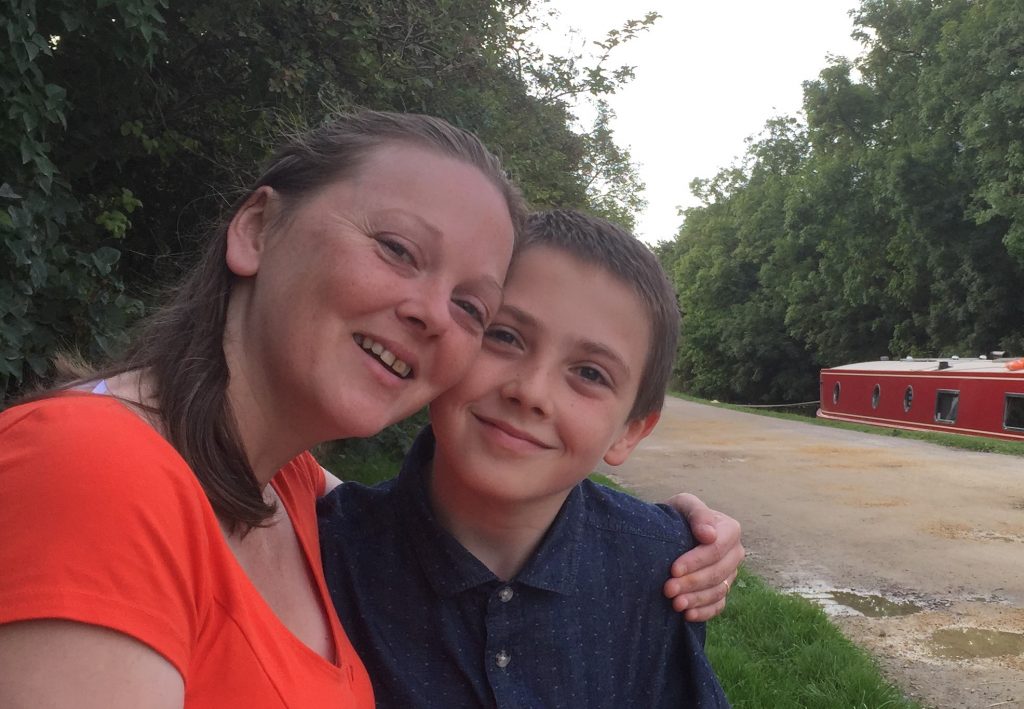
This is Jenni and her son, Dylan, in the picture I used on Just Giving this month. The snap was actually taken last year, near their home in Bingley, and right next to the Leeds-Liverpool Canal. When this picture was taken, we had just finished filming material for a short documentary, High Rise Damp, which looks at the family’s housing situation on the Crosley Wood estate (three concrete tower blocks from the 1960s, which are long past their use-by date). Jenni agreed to take part in the film on the understanding that this was not a film about her so much as it was a film about people like her. The idea was to tell a story that, while necessarily personal, might be understood as being representative of many similar stories…
In the film, Jenni mentions getting into rent arrears with her housing association, Incommunities, at a time when she was having to take a lot of unpaid time off work because Dylan was sick with asthma — a condition that doctors said was very likely caused, or at least exacerbated, by the damp conditions in their flat. As a consequence of her mentioning this, public screenings of this film have led on more than one occasion to individual spectators offering to help pay off some of the family’s debt. Jenni, however, while grateful for such generosity, has resisted such offers on the grounds that this was — as I said — not just about her. Why should she benefit personally when so many others are in similar need?
Jenni’s admirable reluctance to take personal advantage of the situation is just one of the reasons why I like her so much. But this summer the family’s financial situation took a turn for the worse (for reasons too personal and non-relevant to discuss here), so that their careful attempts to manage their outstanding debt, while also paying their current rent due, was thrown off kilter. As a consequence, their housing association Incommunities began threatening eviction, and the family was eventually informed that the bailiffs would be coming to repossess their flat on Tuesday 7th November, unless they could come up with a big chunk of the money they owed. To be fair to Incommunities, they did respond to Jenni’s request for mercy: in the end, their demand was for a substantial portion of the debt, rather than the whole thing, to be paid off if eviction was to be avoided. But that offer left Jenni’s family with less than a week to find £1700, and they simply had no idea where they were going to find such a sum. Clutching at straws, I asked Jenni if I should try “going public” through a crowd-funding campaign.
We were both very wary about this idea, for obvious reasons. Jenni would be putting her family in the public eye as people who owed a substantial amount of money — and we were concerned that this might invite negative reactions. And why, given that so many other families are facing similar situations at present, would anyone think this particular family was worth helping? Jenni was as sceptical as I was about whether we would achieve anything, but as she said, she just didn’t have any other options left.
So… I set up a Just Giving page on the morning of Thursday 2nd November, with no idea whether we’d get anywhere. I put the link on my personal Facebook page, shared it on the Multi-Story Water Facebook page, and tagged a few people I knew who had seen the film, in the hope that they would feel inclined to donate. I’m no social media native (don’t even start me on Twitter…) so I privately felt that this was probably far too little, far too late. But by some miracle of viral sharing, the donations began to roll in that morning, surged a bit at lunchtime, tailed off during the afternoon, and then accelerated quickly again after work… We hit our £1700 target on that first day of the appeal, by around mid-evening…
 Amazed and humbled, I posted a message thanking everyone who had donated, and mentioning that — if anyone else still wanted to donate — then the extra would all go to further defraying the family’s rent arrears. And over the next few days, sure enough, the total sum continued to tick up. By Tuesday — the day of the scheduled eviction — the total amount given had topped just over £2,200 (where it has stayed since).
Amazed and humbled, I posted a message thanking everyone who had donated, and mentioning that — if anyone else still wanted to donate — then the extra would all go to further defraying the family’s rent arrears. And over the next few days, sure enough, the total sum continued to tick up. By Tuesday — the day of the scheduled eviction — the total amount given had topped just over £2,200 (where it has stayed since).

By then, of course, the eviction had been called off because we had been able to pay off the required sum. Jenni and her family — completely gobsmacked by the public response — breathed an enormous sigh of relief and sent out prayers and thanks to everyone who had donated:
“I cant believe all the wonderful people out there willing to help us. It was never my intention but we are so desperate it was the only other option. I have no words we can’t thank you and everyone enough, Dylan has a smile on his face and that’s priceless x. I want everyone to know how much we appreciate their help and support, some of the comments have brought tears to my eyes x”
So why did so many people support this? There were 98 separate donors in the end, most of whom did not know Jenni or her family at all. The statistics on the Just Giving site say a lot: after being shared 80 times on that first day alone, the page was viewed over 2000 times… So it was enough that around 1 in 20 of the people who looked at the story decided to donate… And that’s how these things work!
“Saw the film a few months ago and I’m really glad you’re fundraising. I wanted to help, and now I can (at least a bit!) Good luck everyone, more people are on your side than you’ve ever met.”
Interestingly, among those who did get onboard with the campaign, it actually became a bit of a “thing” that Thursday. I followed some Facebook feeds where people were reporting to each other that they had donated, and were updating each other on the rising total, with considerable good humour and something approaching excitement! As one friend of a friend commented, “this thread has made my day!” It’s really a win-win when people can be entertained by giving money to somebody else!
But what was also very clear from the comments posted was that people saw this as a symbolic campaign. It was, again, not just about Jenni’s family. They had simply become a publicly-identified example of a problem that many people were aware of but didn’t know how to do anything about. So given the chance to do something, people did… “We shouldn’t have to do this“, wrote one donor, while doing it, “but I can’t stand by and let this happen.”
Other comments suggested an awareness of the stark irony that donors were being asked to help Jenni and her family to stay in less than ideal living conditions:
“I would love to see them have enough to rehouse themselves somewhere healthier and happier. Housing in this country is appalling. Best wishes xx”
Of course part of the Catch 22 that families like Jenni’s face is that it is very difficult to get anywhere else to live if you cannot get a good reference from your previous landlord. And that won’t happen if you owe them money… So let’s hope that, with a big chunk of their debt now cleared, Jenni and her family are indeed closer to be able to rehouse themselves somewhere better.
Anyway, as I said at the outset, I wasn’t going to blog about this. But then a couple of days ago, I picked up a phone message from someone at Radio 5 Live, who had read about the crowd-funding and wanted to know if Jenni and Dylan might be willing to talk on the radio… They were looking for personal stories to illustrate the wider problem of the housing crisis.
I called Jenni and discussed this with her, but she – quite understandably – said that she didn’t want to be on the radio. She had gone public because she needed to, but she didn’t have any wish to become a public figure. She was, she said, perfectly happy for me to speak on the family’s behalf if the radio people were good with that, because she knew I would try to direct the story back to the general problem and away from the personal specifics. One thing that both of us have found is that some people can get unduly nosey about personal specifics, once a story like this is out there…
In the event, nothing happened with the BBC, because when I called them back the next day, it turned out that they’d already covered housing on that morning’s breakfast show… (after leaving me a message at 4.30pm the previous afternoon… clearly I’m not wired for radio schedules!) I suspect they wouldn’t have pursued this story anyway, without Jenni herself being willing to speak on air, but the person I talked to did ask me how she was, and seemed genuinely pleased when I confirmed that the eviction had been called off…
You see, people do care about people. And actually, I do believe that many people who work for housing associations also care about people. This shouldn’t become an “us versus them” situation, because some of the problems here are systemic and are beyond the power of any one organisation to address (I tried to discuss some of these complexities in a 3-part blog I wrote in August). So the real question is how to turn the evident public concern about these issues into a movement for real political change. Because this is not just a story about individual families.
***
I have to stress again that I’m no expert on these issues, but I do think — as I indicated at the start of this blog — that it’s not enough simply for this Conservative government to throw money at housing associations and their balance sheets. That’s no guarantee that such money will really be used in a way that helps those most in need, unless clearer policy guidance is also put in place.
That seems to be the thought underlying the Labour Party’s decision this week to launch a petition — addressed to the Prime Minister — demanding that new regulations are put in place to ensure social housing be made safer for all residents. (This is the link, in case you want to sign it!) “Thousands of families are living in high-rise properties in the UK“, the petition statement begins: “Nearly all of these homes do not have adequate safety systems.”
It must be said that there’s no actual evidence on the petition to back up this claim (which is of course inspired by the ongoing controversy about the Grenfell tower fire in London). But in the case of Bradford, the assertion raises a specific question for Incommunities… When Jenni and I met with Chief Executive Geraldine Howley on August 11th, she told us that an independent fire safety audit of Bradford’s tower blocks had been commissioned from Savills. This was scheduled to begin the following week, on August 18th. It must, presumably, have been completed by now, so Incommunities should have detailed information on whether or not their tower blocks have adequate safety systems. However, I’ve searched the Incommunities website, and also the Telegraph and Argus website for reporting on this topic, and I can’t find any evidence that the findings of that Savills inspection have been made public. So where are they?
If they have been published, and I’ve missed it somehow, and everything is fine, then that’s great. But the communication that residents at Crosley Wood have been receiving recently has not been about safety, it’s been about these tower blocks possibly being sold or demolished by 2019, and the residents being relocated (see my last blog). The stated reason for this future planning is that the estate is now economically unviable, because of a lack of demand to live there… And maybe that’s really all there is to it. But as long as pertinent information remains (apparently) unpublished, then people are bound to worry that there’s something they are not being told.
People who live in tower blocks deserve to know the truth about the conditions they’re living in. So if the Savills report has not yet been made public, then maybe it’s time that it was. Fire safety has become a political issue since Grenfell tower, but it’s also a very immediate, personal issue for residents…
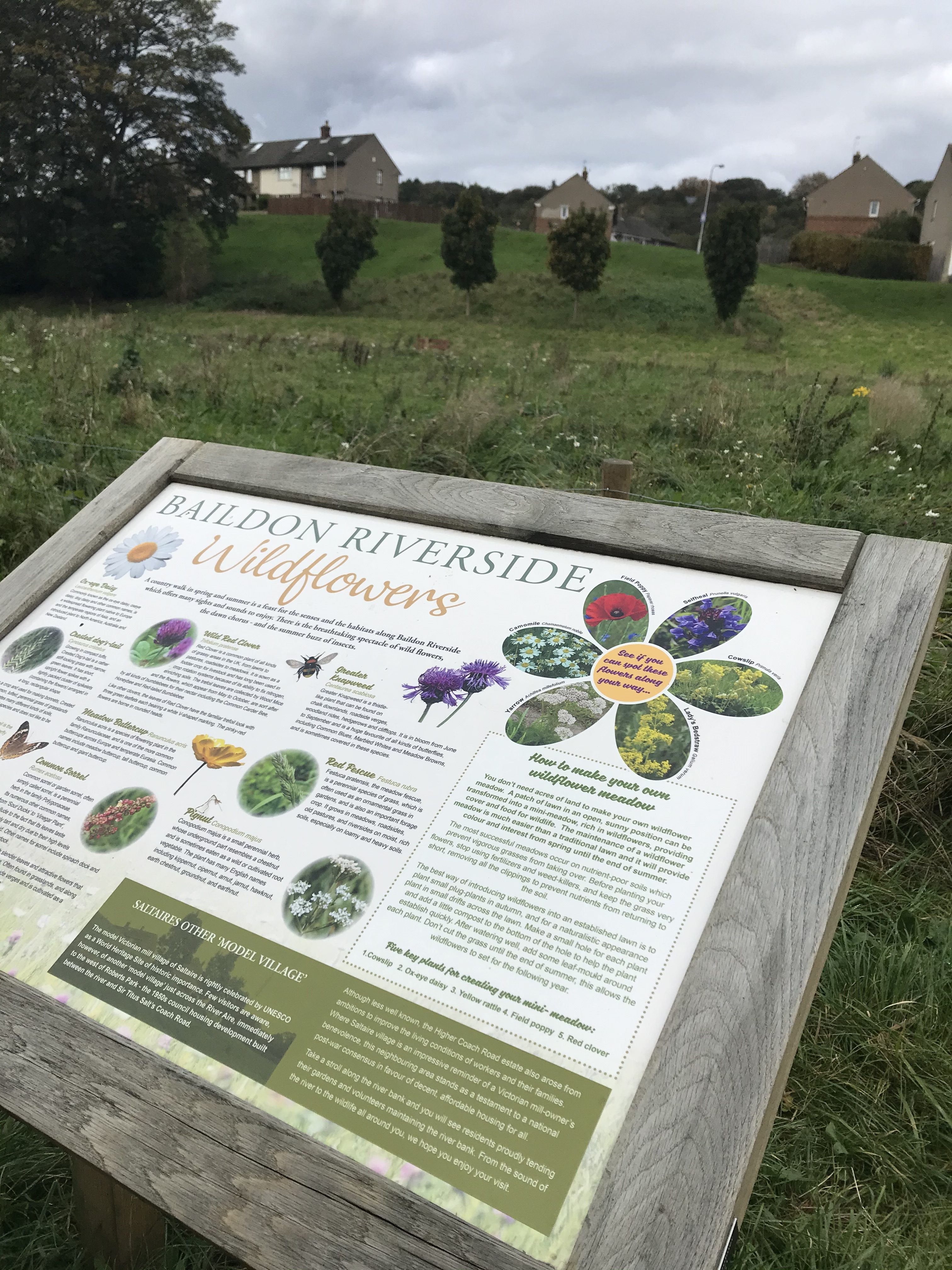 This grassy stretch of land, which never really had a name before, has now been dubbed “Baildon Riverside” by the Higher Coach Road Residents’ Group. (A canny bit of branding!) Last Saturday, October 19th, HCRRG held a little event to officially “launch” these new riverside facilities. The Bradford Telegraph and Argus sent a photographer, whose pictures finally appeared online yesterday — click here to see them. So I thought I’d join in and and share a few of my own.
This grassy stretch of land, which never really had a name before, has now been dubbed “Baildon Riverside” by the Higher Coach Road Residents’ Group. (A canny bit of branding!) Last Saturday, October 19th, HCRRG held a little event to officially “launch” these new riverside facilities. The Bradford Telegraph and Argus sent a photographer, whose pictures finally appeared online yesterday — click here to see them. So I thought I’d join in and and share a few of my own.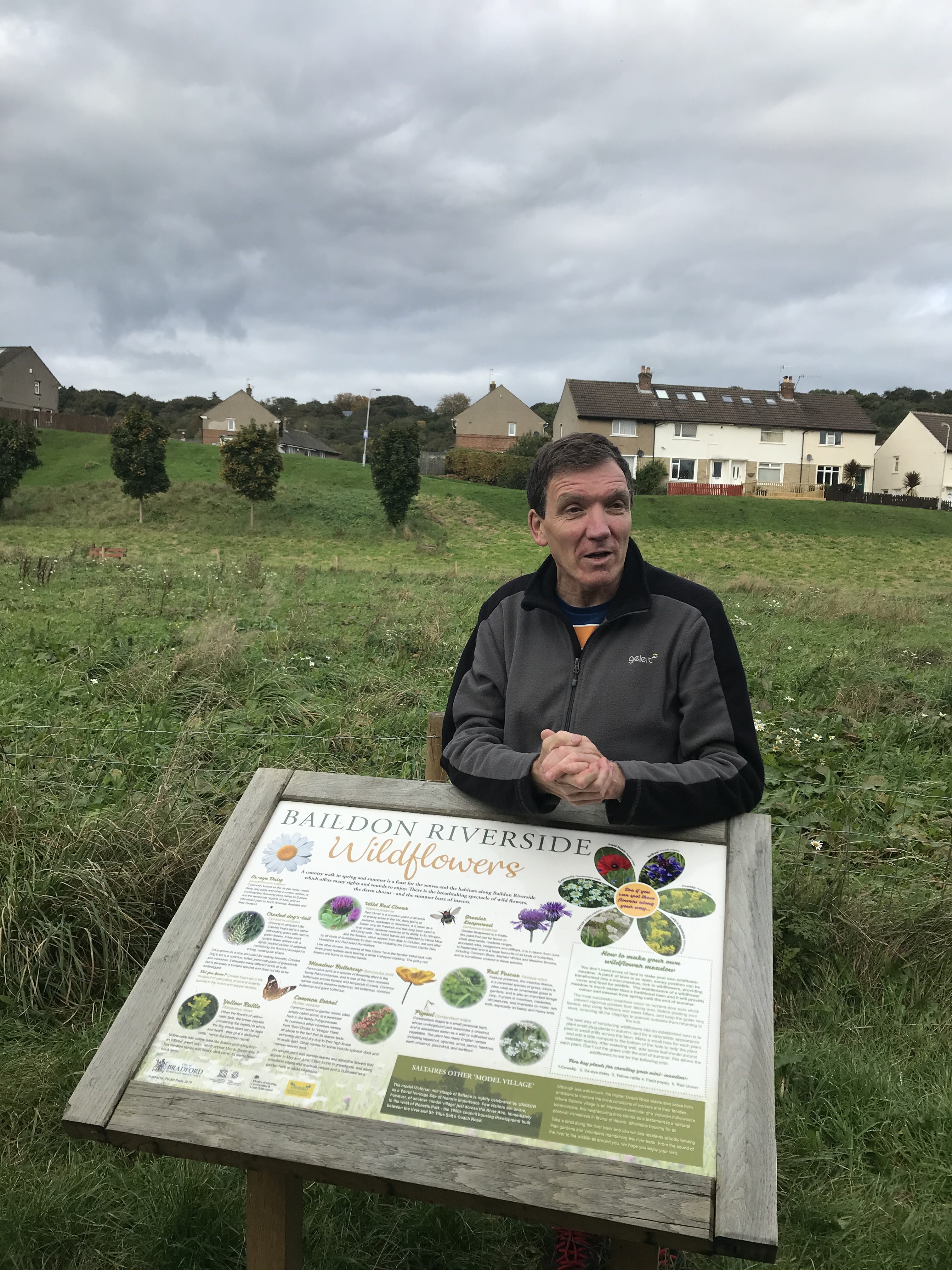
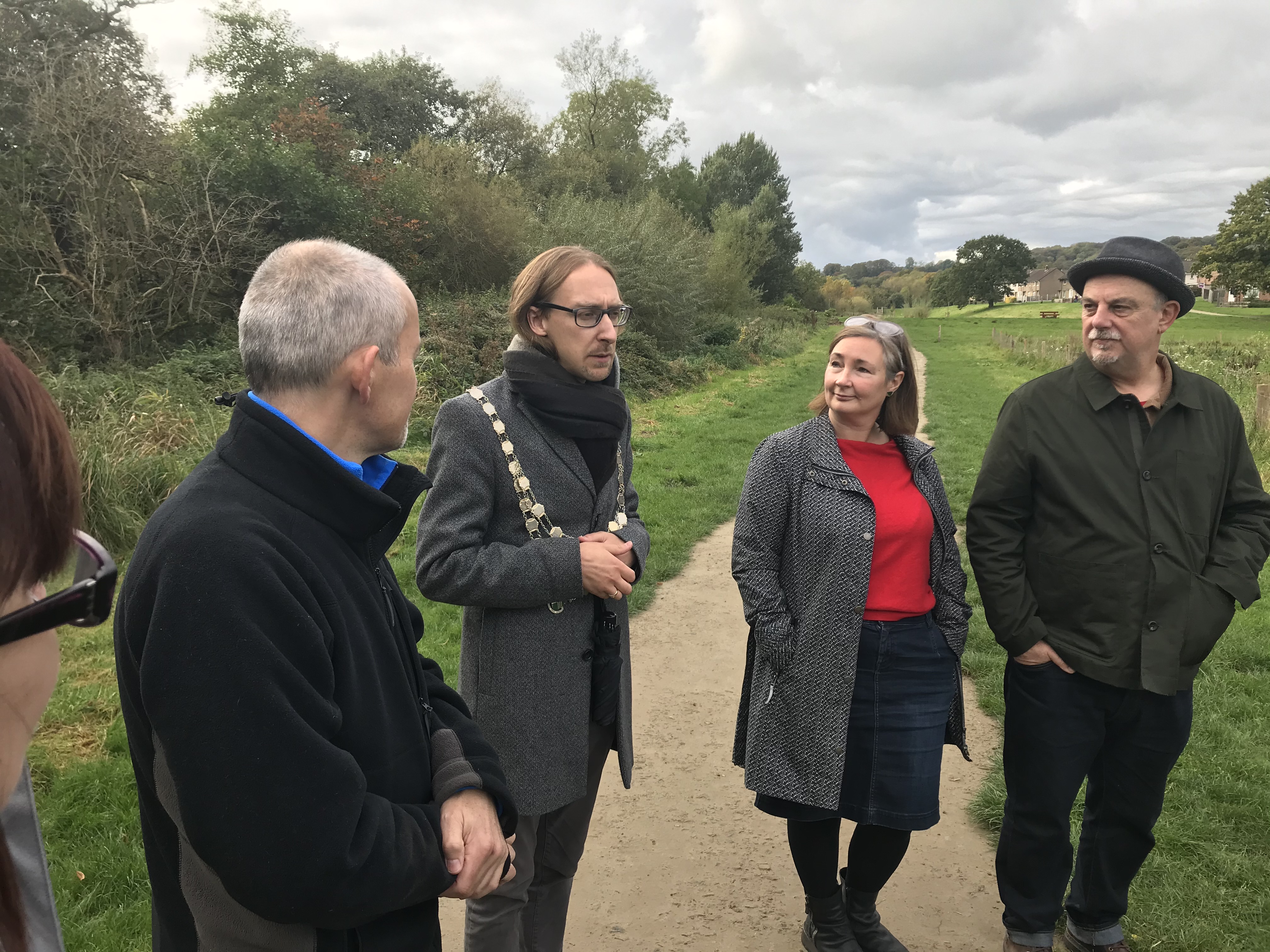
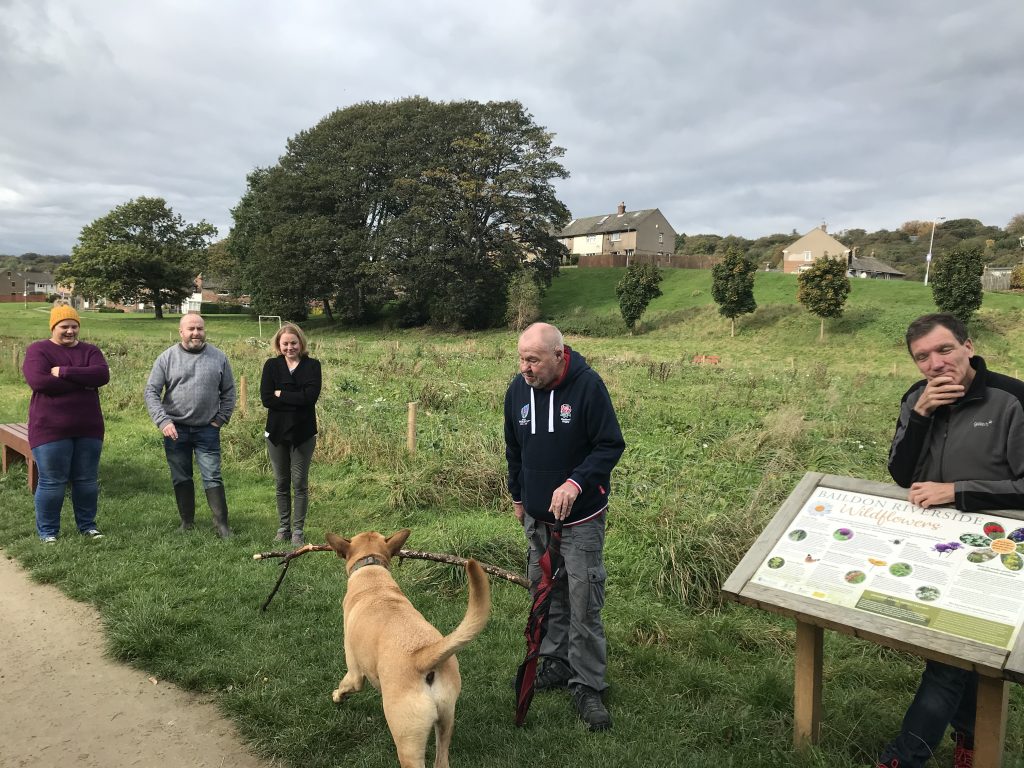 After Joe, resident Stewart Gledhill (middle of this picture) said a few words about how he had originally thought of the idea for turning the muddy grass track by the river into a proper footpath which would be safe underfoot even for older and less able walkers (Stewart’s own mobility is not what it once was). Like Joe, Stewart also made a point of mentioning our Multi-Story Water project as a catalyst at the start of this process. We helped Stewart present his ideas to other residents and build support for them. That was before Stewart became the first Chairman of HCRRG, when it was formed back in 2015, although that role is now held by Joe Kean (second on left above), whose dog did an excellent job of upstaging Stewart during his speech… 🙂
After Joe, resident Stewart Gledhill (middle of this picture) said a few words about how he had originally thought of the idea for turning the muddy grass track by the river into a proper footpath which would be safe underfoot even for older and less able walkers (Stewart’s own mobility is not what it once was). Like Joe, Stewart also made a point of mentioning our Multi-Story Water project as a catalyst at the start of this process. We helped Stewart present his ideas to other residents and build support for them. That was before Stewart became the first Chairman of HCRRG, when it was formed back in 2015, although that role is now held by Joe Kean (second on left above), whose dog did an excellent job of upstaging Stewart during his speech… 🙂 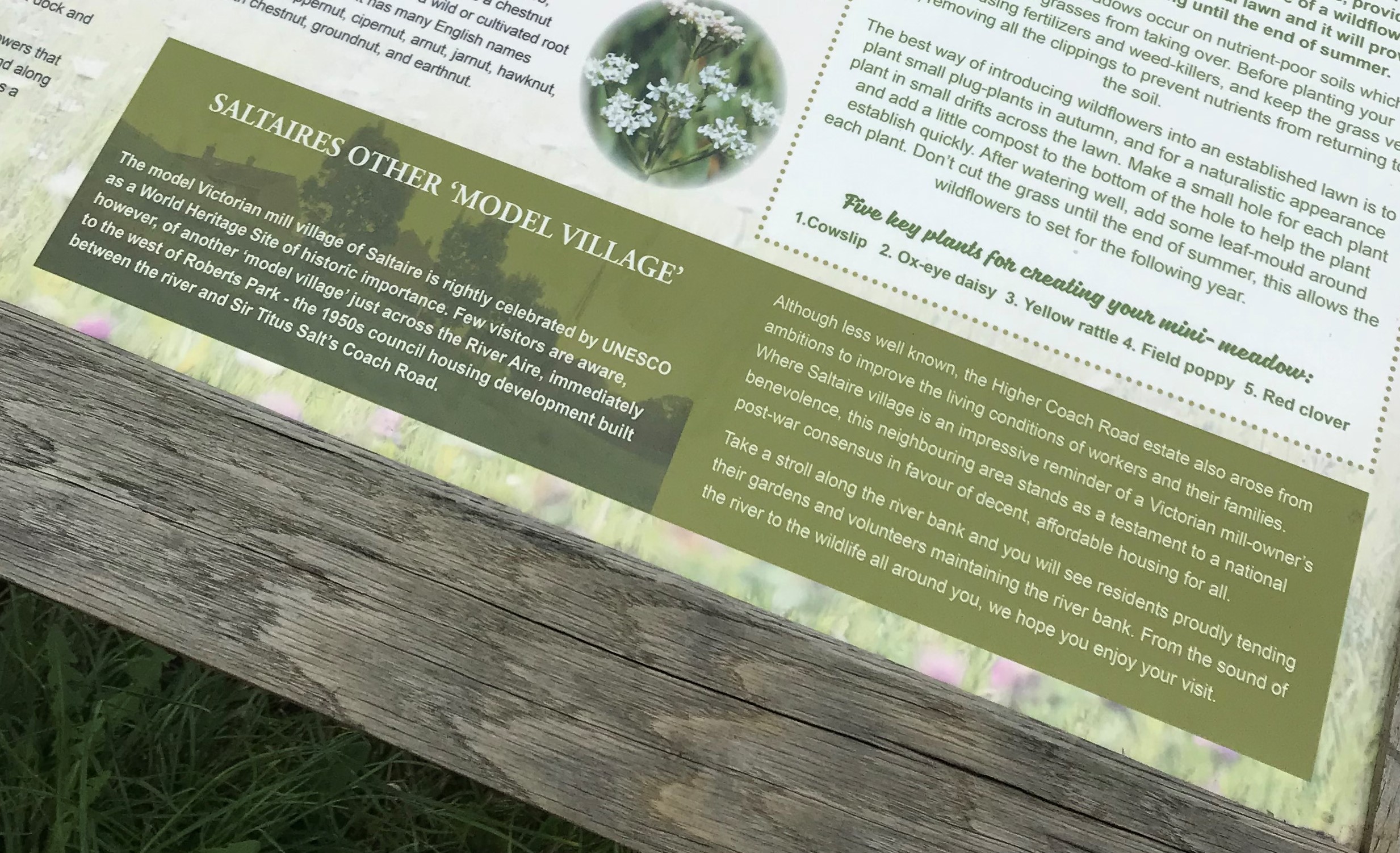

 And so to the Rowing Club, just west of the estate, which had kindly agreed to host us for a little gathering for tea or beer… Here I am with Geoff Roberts (left), the Chairman of the Aire Rivers Trust — another body that helped HCRRG with its dream of a riverside footpath — and Eddie Lawler, the Bard of Saltaire, singer-songwriter extraordinaire. Behind us is Fran, from BCB (Bradford Community Broadcasting) who had also come along with her tape recorder…
And so to the Rowing Club, just west of the estate, which had kindly agreed to host us for a little gathering for tea or beer… Here I am with Geoff Roberts (left), the Chairman of the Aire Rivers Trust — another body that helped HCRRG with its dream of a riverside footpath — and Eddie Lawler, the Bard of Saltaire, singer-songwriter extraordinaire. Behind us is Fran, from BCB (Bradford Community Broadcasting) who had also come along with her tape recorder… Here’s the aforementioned Pat (left) talking with Stewart and the irrepressible Pauline Bradley-Sharp, of Hirst Wood Regeneration Group. They have an amazing local track record in environmental improvements (perhaps most notably their nature reserve across the canal), and were a key inspiration for HCRRG when it got started.
Here’s the aforementioned Pat (left) talking with Stewart and the irrepressible Pauline Bradley-Sharp, of Hirst Wood Regeneration Group. They have an amazing local track record in environmental improvements (perhaps most notably their nature reserve across the canal), and were a key inspiration for HCRRG when it got started. Once everyone had had a bit of a chat and had grabbed a drink, Eddie and I provided some informal entertainment ( or at least, people said they were entertained…) Eddie sang some of his songs about local features like Shipley Glen Tramway and the Bradford Canal, and I interspersed these with some tales about the estate, the Rowing Club, and so forth. We also talked a bit about Aire Rivers Trust’s new DNAire project, now fully funded by the Heritage Lottery Fund, which will be putting a fish pass on Saltaire weir to ensure passage of salmon upstream to the Aire’s upper reaches — for the first time since industrialisation. It’s so great to see a range of people making new initatives happen, whether large or small, for the improvement of the river and its surrounding landscape…
Once everyone had had a bit of a chat and had grabbed a drink, Eddie and I provided some informal entertainment ( or at least, people said they were entertained…) Eddie sang some of his songs about local features like Shipley Glen Tramway and the Bradford Canal, and I interspersed these with some tales about the estate, the Rowing Club, and so forth. We also talked a bit about Aire Rivers Trust’s new DNAire project, now fully funded by the Heritage Lottery Fund, which will be putting a fish pass on Saltaire weir to ensure passage of salmon upstream to the Aire’s upper reaches — for the first time since industrialisation. It’s so great to see a range of people making new initatives happen, whether large or small, for the improvement of the river and its surrounding landscape…




 The riverside path even has a side-track that loops all the way around the wildflower area, so that people can walk around and view it from all sides. I hadn’t expected that!
The riverside path even has a side-track that loops all the way around the wildflower area, so that people can walk around and view it from all sides. I hadn’t expected that!

 All of this is a real benefit for residents, particularly those who are older or less physically mobile, who could not safely get down to the field before. These paths now allow full access for everyone. Still, I’d be lying if I claimed that everyone is now completely happy with the field… For several years now, it’s been a sore point with many residents that Bradford Council’s park service has refused to mow the main part of the field regularly, during the summer months (citing austerity cuts). This still seems to be an issue, despite the other improvements, and here’s the result…
All of this is a real benefit for residents, particularly those who are older or less physically mobile, who could not safely get down to the field before. These paths now allow full access for everyone. Still, I’d be lying if I claimed that everyone is now completely happy with the field… For several years now, it’s been a sore point with many residents that Bradford Council’s park service has refused to mow the main part of the field regularly, during the summer months (citing austerity cuts). This still seems to be an issue, despite the other improvements, and here’s the result… Obviously, unlike the planned wildflower section, this is just a bit of a scrubby mess… although birds and insects love it, for sure. The long grass really limits what people can do on the field, although it hasn’t stopped them completely! That shorter-grassed area in the middle of the picture above shows the spot where residents’ bonfires sometimes happen. The spirit of unofficial improvisation with the field has always been an aspect of life on the estate, and hopefully the new improvements won’t change that!
Obviously, unlike the planned wildflower section, this is just a bit of a scrubby mess… although birds and insects love it, for sure. The long grass really limits what people can do on the field, although it hasn’t stopped them completely! That shorter-grassed area in the middle of the picture above shows the spot where residents’ bonfires sometimes happen. The spirit of unofficial improvisation with the field has always been an aspect of life on the estate, and hopefully the new improvements won’t change that!
 … notice the newly planted trees in this picture (and the one above it), again all part of the landscaping improvements. And also, notice the side path going off the left in this picture, a little way down. This leads walkers to a short tunnel underneath the Barden aqueduct (which we once turned into
… notice the newly planted trees in this picture (and the one above it), again all part of the landscaping improvements. And also, notice the side path going off the left in this picture, a little way down. This leads walkers to a short tunnel underneath the Barden aqueduct (which we once turned into 

 And finally, here is the River Aire itself, viewed from just a few yards further upstream, near the Rowing Club. The weir was looking pretty stormy that day, after a lot of rain.
And finally, here is the River Aire itself, viewed from just a few yards further upstream, near the Rowing Club. The weir was looking pretty stormy that day, after a lot of rain.
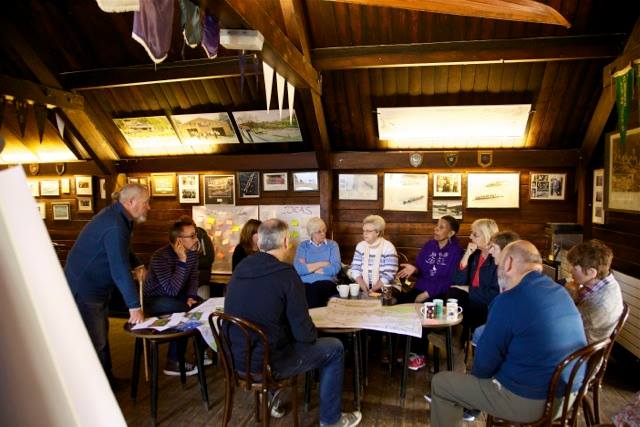
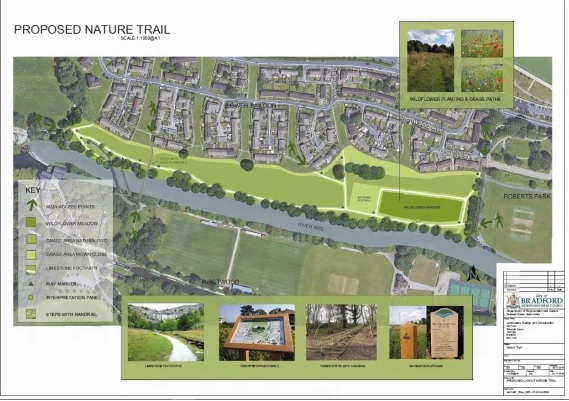
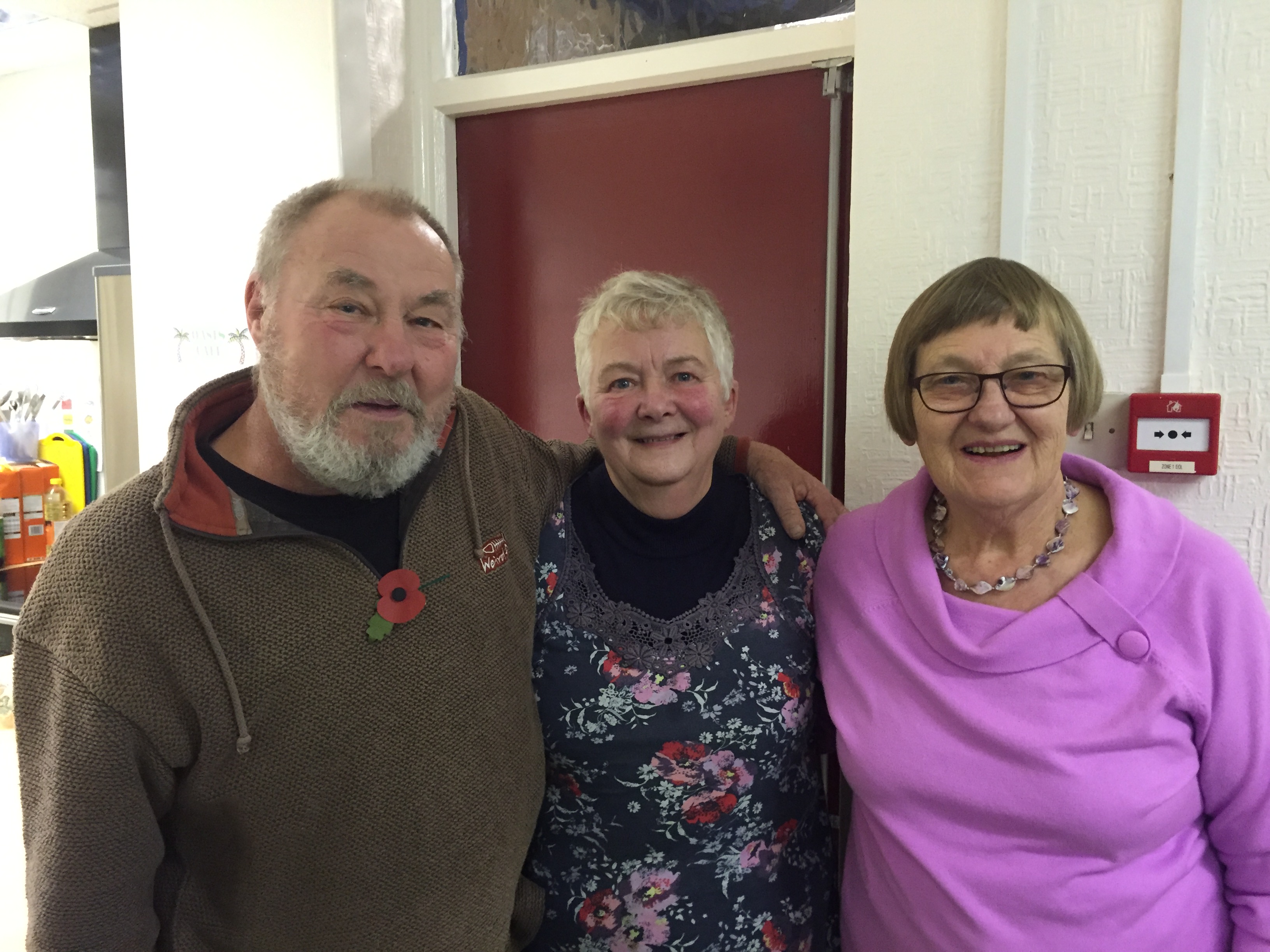
 This is one of my favourite Christmas cards this year — a fat cat looking none too happy, because he hasn’t a snowball’s chance… (the red scarf – tie? – reminds me of Donald Trump but I’ve always been prone to over-interpreting things!). Anyway, the card is from Lynda, from Lower Baildon, who featured as a “character” in both my one-man show
This is one of my favourite Christmas cards this year — a fat cat looking none too happy, because he hasn’t a snowball’s chance… (the red scarf – tie? – reminds me of Donald Trump but I’ve always been prone to over-interpreting things!). Anyway, the card is from Lynda, from Lower Baildon, who featured as a “character” in both my one-man show 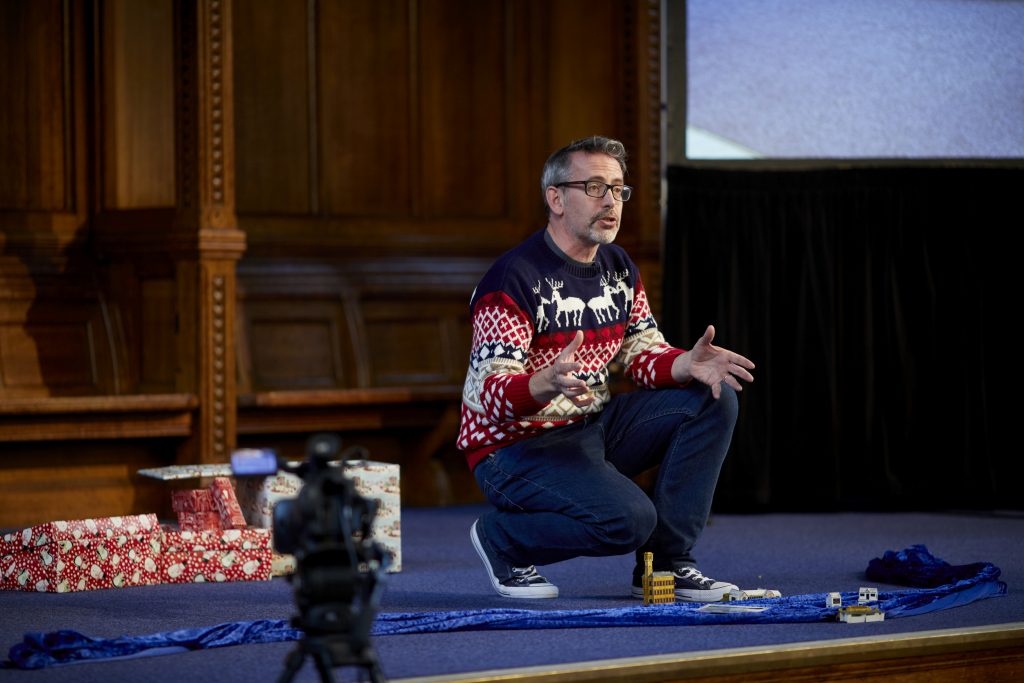
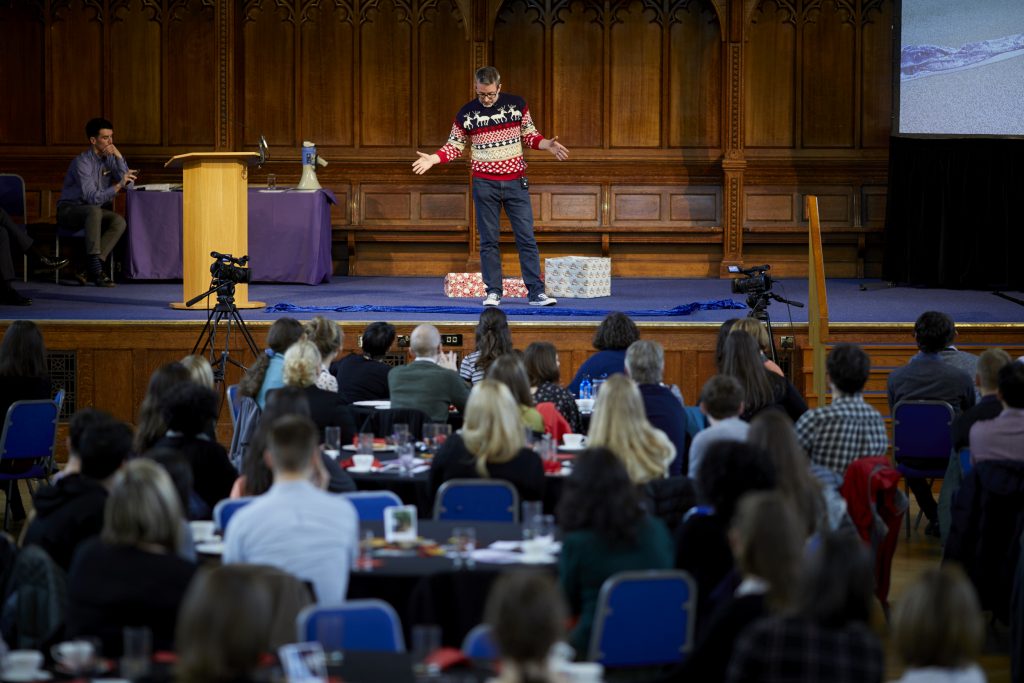
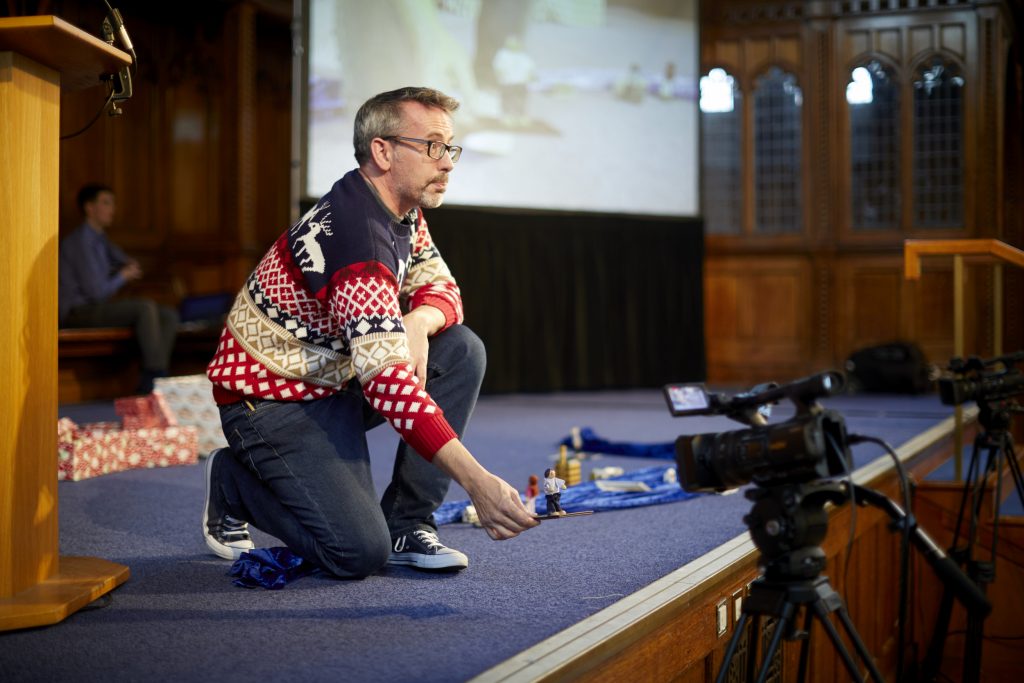
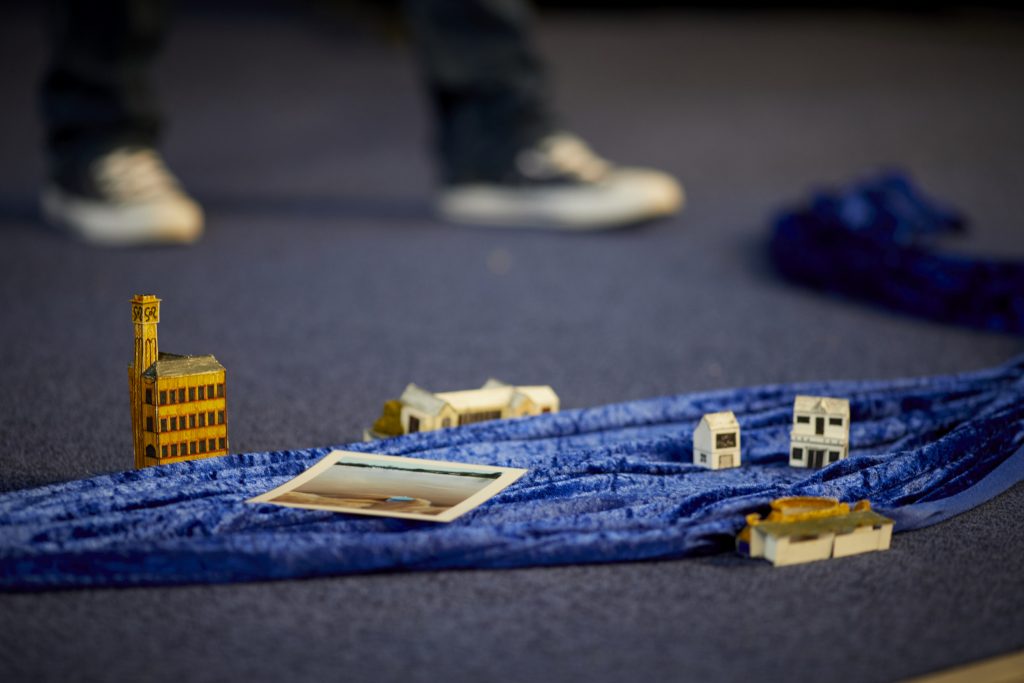


 Maybe that’s too far back. Maybe I should begin in the 1770s, when the first sections of the Leeds to Liverpool canal were cut — through Shipley and Bingley — the first stage in a process that would connect Leeds, Bradford and Liverpool by water, and catalyse those cities’ rapid expansion during the Industrial Revolution.
Maybe that’s too far back. Maybe I should begin in the 1770s, when the first sections of the Leeds to Liverpool canal were cut — through Shipley and Bingley — the first stage in a process that would connect Leeds, Bradford and Liverpool by water, and catalyse those cities’ rapid expansion during the Industrial Revolution.
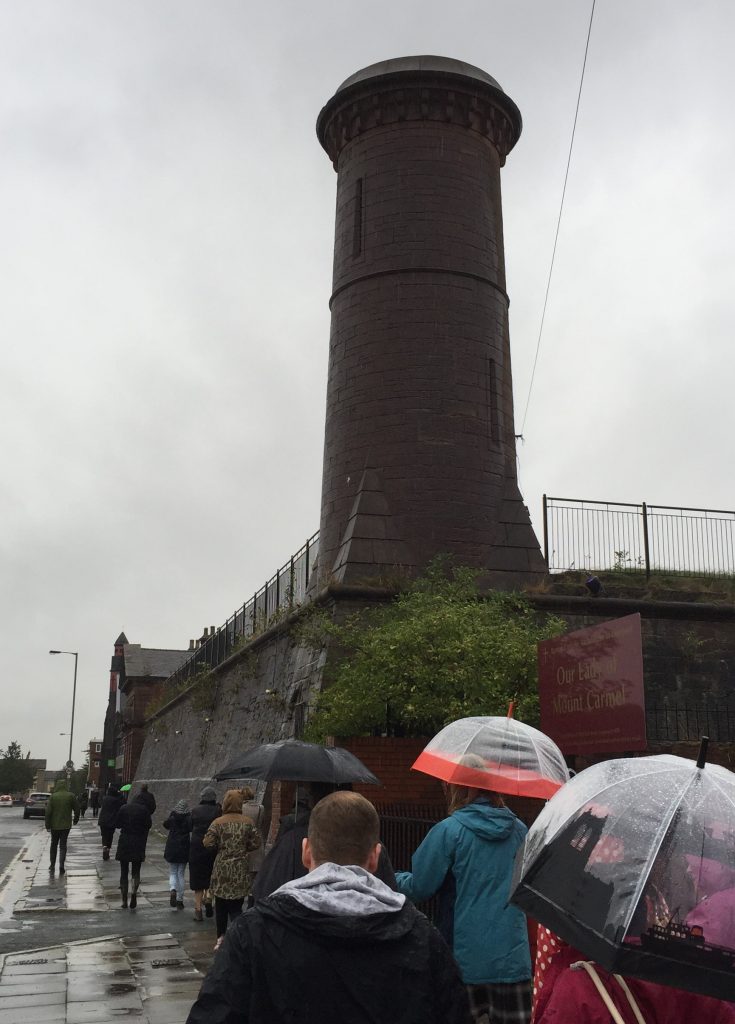 Which is why, last night, I found myself walking through pouring rain in the Toxteth area of Liverpool, along with other intrepid visitors to Aurora‘s very first public showing. Everyone was cold and damp, and we’d been warned that we were likely to stay cold and damp, because we were about to step inside a reservoir.
Which is why, last night, I found myself walking through pouring rain in the Toxteth area of Liverpool, along with other intrepid visitors to Aurora‘s very first public showing. Everyone was cold and damp, and we’d been warned that we were likely to stay cold and damp, because we were about to step inside a reservoir. 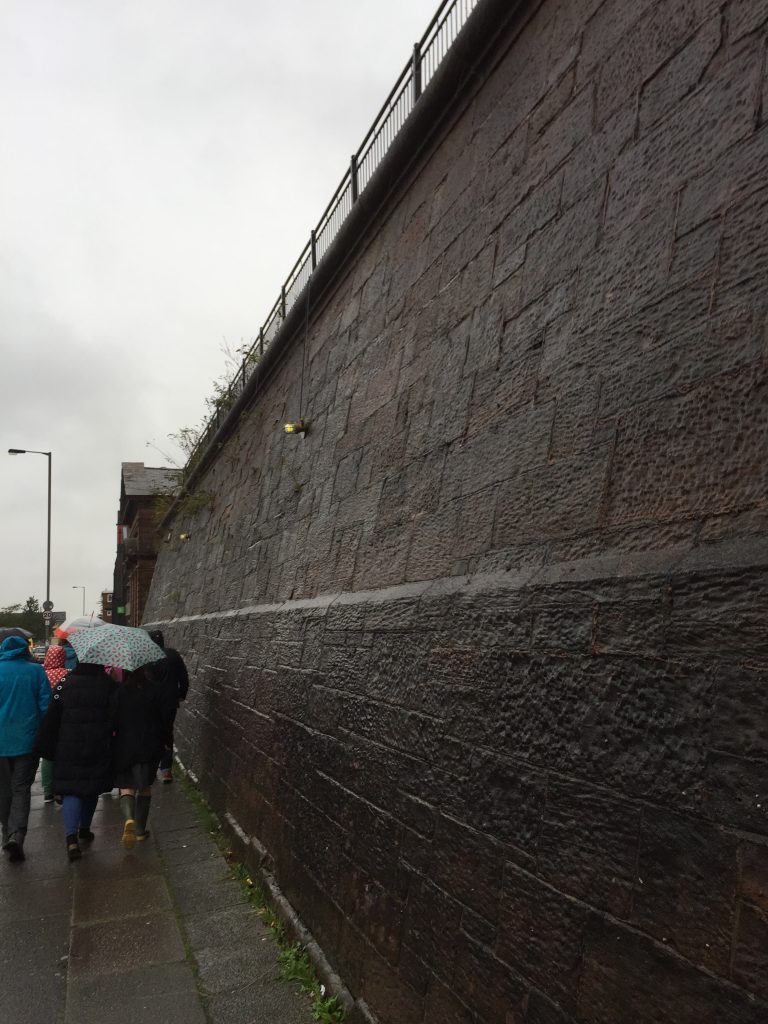 Those forbidding, sloping walls, built around 1845, were designed to contain and support vast quantities of water. This water, which presumably fell from the sky to begin with? — this being Liverpool — was held in a rectangular tank measuring around 2600 square metres. It was distributed as needed to provide clean water to the city’s rapidly expanding population, and also supplied early fire-fighting efforts, etc.
Those forbidding, sloping walls, built around 1845, were designed to contain and support vast quantities of water. This water, which presumably fell from the sky to begin with? — this being Liverpool — was held in a rectangular tank measuring around 2600 square metres. It was distributed as needed to provide clean water to the city’s rapidly expanding population, and also supplied early fire-fighting efforts, etc.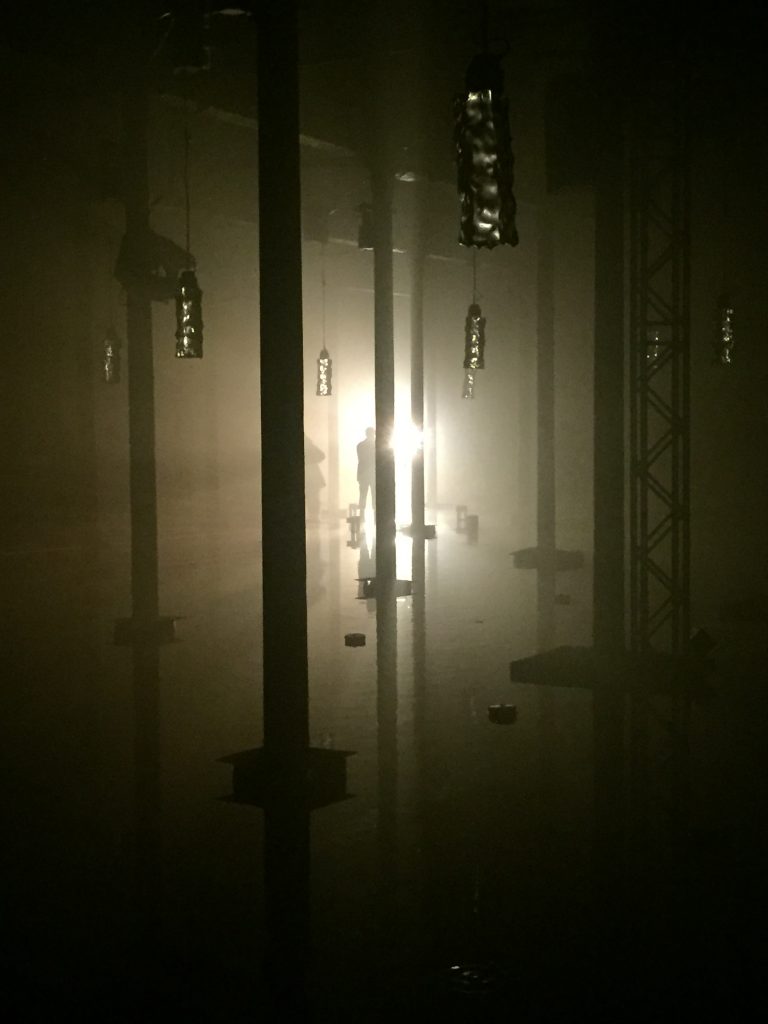 The roof of this vast space is held up with rows of iron pillars. Moving inside the building, we found ourselves navigating our way freely around a big rectangle of walkways, shadowing the interior edges of the building, which were marked out by coloured lasers. These walkways were all under 2 or 3 centimetres of water, so as we walked, patterns of coloured light rippled out in front of us.
The roof of this vast space is held up with rows of iron pillars. Moving inside the building, we found ourselves navigating our way freely around a big rectangle of walkways, shadowing the interior edges of the building, which were marked out by coloured lasers. These walkways were all under 2 or 3 centimetres of water, so as we walked, patterns of coloured light rippled out in front of us. I went into Aurora not really knowing what to expect. The last piece of Invisible Flock’s that I saw,
I went into Aurora not really knowing what to expect. The last piece of Invisible Flock’s that I saw, 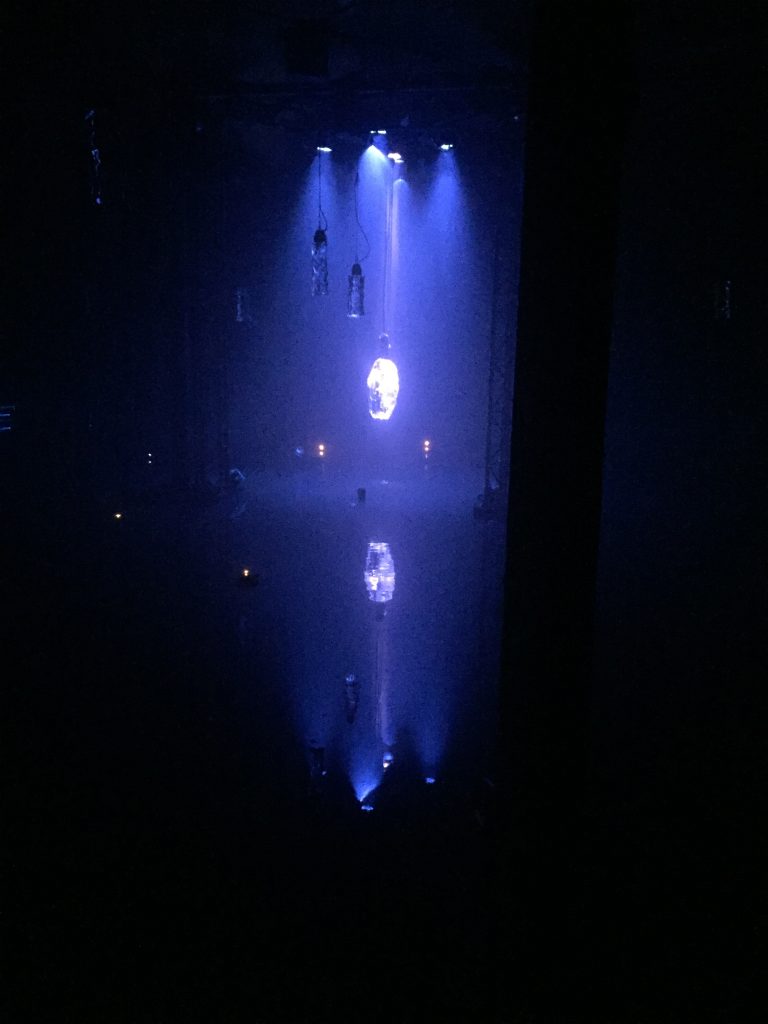 As an experience, Aurora runs for about 40 minutes. Which is actually quite a long time when you’re standing in the dark and the cold, watching light play across water. If this were a regular gallery installation, it would be the kind of thing you’d just walk in and out of, when you’ve had enough, but here — like a theatre show — we all entered together and left together at the end. A captive audience. Trapped in the dark. Not quite sure how to get out even if you wanted to. So you’re very much left alone with your own thoughts. Partly because talking would seem, somehow, wrong in here. And partly because the sound score — an eerie combination of electronics and strings — is sometimes so loud it would drown out speech. Although it’s also sometimes so quiet that you can hear water dripping.
As an experience, Aurora runs for about 40 minutes. Which is actually quite a long time when you’re standing in the dark and the cold, watching light play across water. If this were a regular gallery installation, it would be the kind of thing you’d just walk in and out of, when you’ve had enough, but here — like a theatre show — we all entered together and left together at the end. A captive audience. Trapped in the dark. Not quite sure how to get out even if you wanted to. So you’re very much left alone with your own thoughts. Partly because talking would seem, somehow, wrong in here. And partly because the sound score — an eerie combination of electronics and strings — is sometimes so loud it would drown out speech. Although it’s also sometimes so quiet that you can hear water dripping.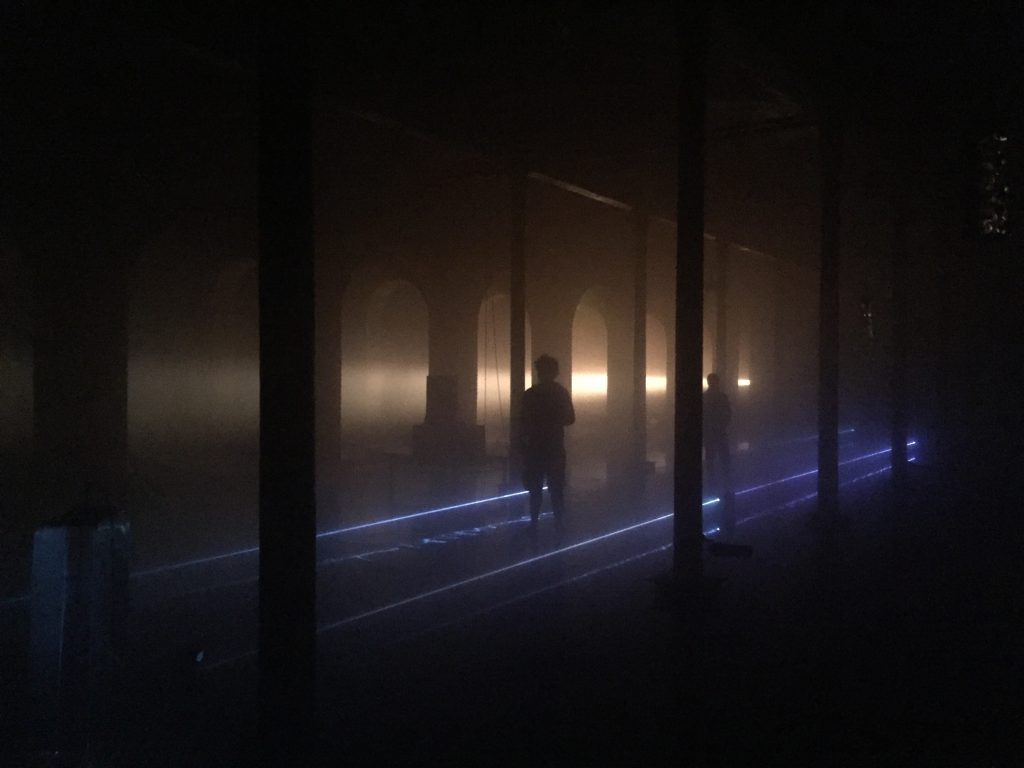 A lot of things run through your head in a situation like this. I went through a phase, for example, of rejection and denial. It’s really just a big
A lot of things run through your head in a situation like this. I went through a phase, for example, of rejection and denial. It’s really just a big 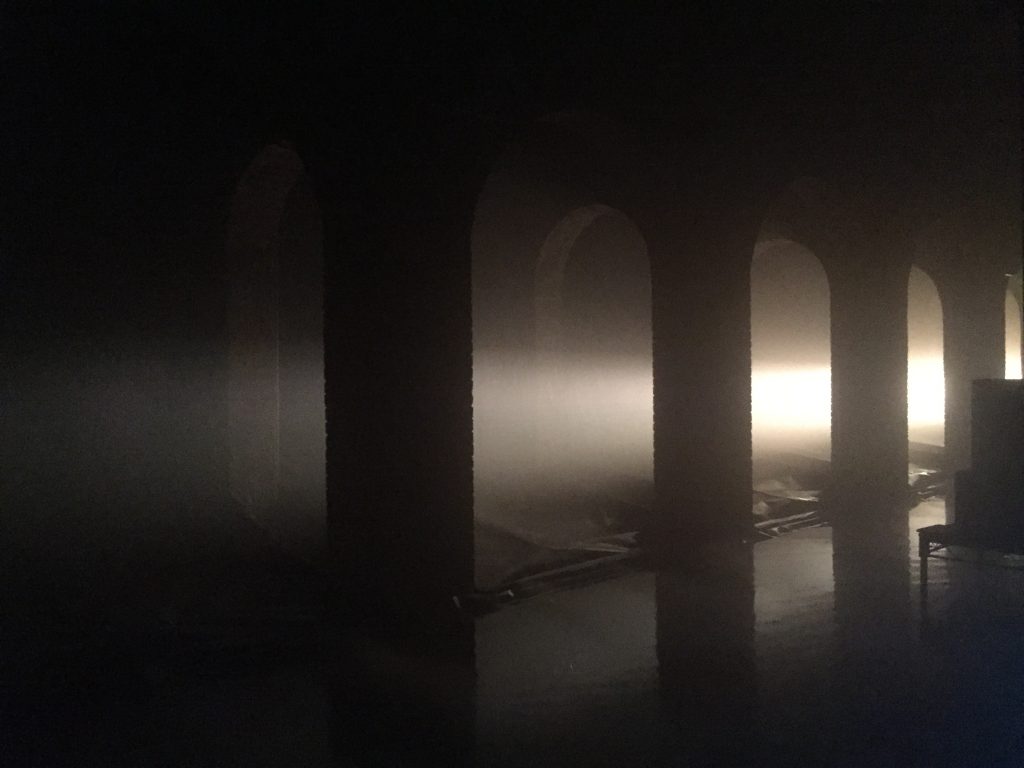 There was a stage in the show when we started to be shown more of the looming, arch-like architecture of the building — and though you can’t really see it in the picture above, it actually starting raining inside the building, around the inside of the exterior wall. This was the point when the piece felt the most “human” to me — an evocation both of man-made structures and of the weather we all live with in the north of England… the weather that Liverpool’s Victorian workers trudged through, just as we had today.
There was a stage in the show when we started to be shown more of the looming, arch-like architecture of the building — and though you can’t really see it in the picture above, it actually starting raining inside the building, around the inside of the exterior wall. This was the point when the piece felt the most “human” to me — an evocation both of man-made structures and of the weather we all live with in the north of England… the weather that Liverpool’s Victorian workers trudged through, just as we had today.
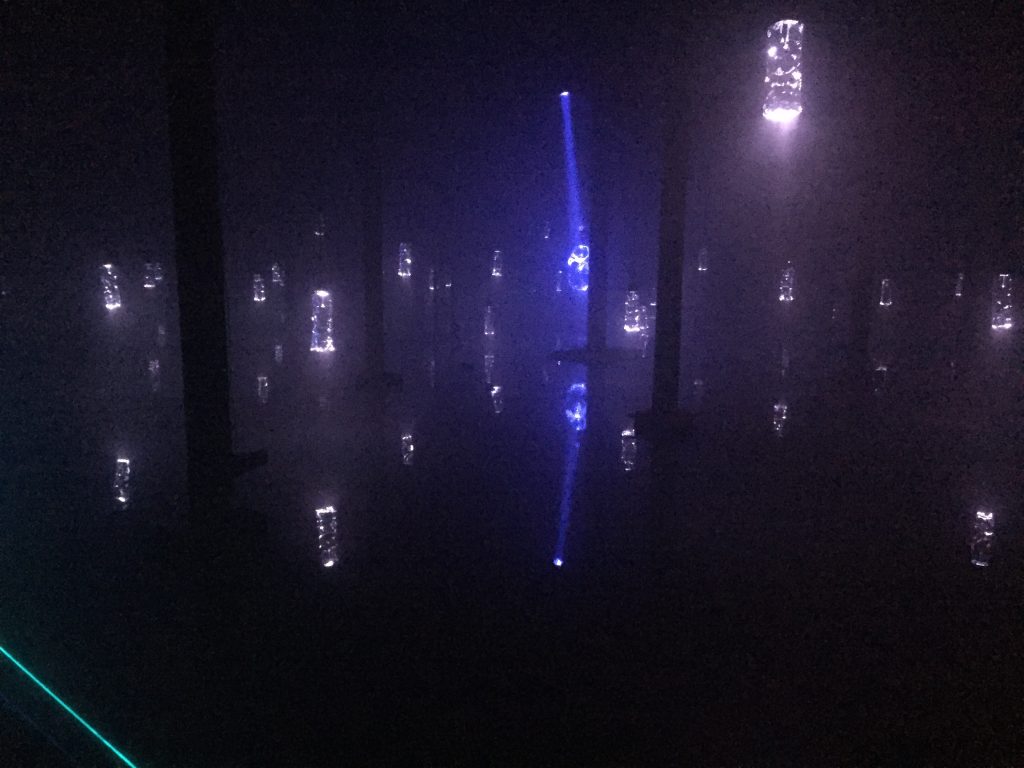 For me, this thought was epitomised by the strange, hanging shapes that formed a kind of field, or cloud, or constellation around that central ice block. Shapes that looked at first like lanterns, then maybe water containers of some sort… but also weirdly alien. It crossed my mind, briefly, that they were the eggs of an Alien hive mother… Eventually I realised that they too, like the egg-like form in the centre, were ice. And they were melting. Water going from solid to liquid.
For me, this thought was epitomised by the strange, hanging shapes that formed a kind of field, or cloud, or constellation around that central ice block. Shapes that looked at first like lanterns, then maybe water containers of some sort… but also weirdly alien. It crossed my mind, briefly, that they were the eggs of an Alien hive mother… Eventually I realised that they too, like the egg-like form in the centre, were ice. And they were melting. Water going from solid to liquid. In one particularly eerie moment, these shapes hung very low over the water — as if threatening to descend right into it — before rising back up into the “stars”. The music during this whole section seemed mournful, haunting — I can’t even start to describe it — but in my mind the whole thing started to crystallise as a piece that was really, truly indifferent to human beings. Like the planet itself, perhaps. The planet that we are irrevocably altering with our own indifference towards it. The glaciers are melting. Sea levels are rising. The next Great Extinction of earthly species is already underway, and we started it — round about the time of the Industrial Revolution, when this building went up and we started burning fossil fuels at an ever-more-exponential rate. Aurora, then, evokes the facts of a very
In one particularly eerie moment, these shapes hung very low over the water — as if threatening to descend right into it — before rising back up into the “stars”. The music during this whole section seemed mournful, haunting — I can’t even start to describe it — but in my mind the whole thing started to crystallise as a piece that was really, truly indifferent to human beings. Like the planet itself, perhaps. The planet that we are irrevocably altering with our own indifference towards it. The glaciers are melting. Sea levels are rising. The next Great Extinction of earthly species is already underway, and we started it — round about the time of the Industrial Revolution, when this building went up and we started burning fossil fuels at an ever-more-exponential rate. Aurora, then, evokes the facts of a very 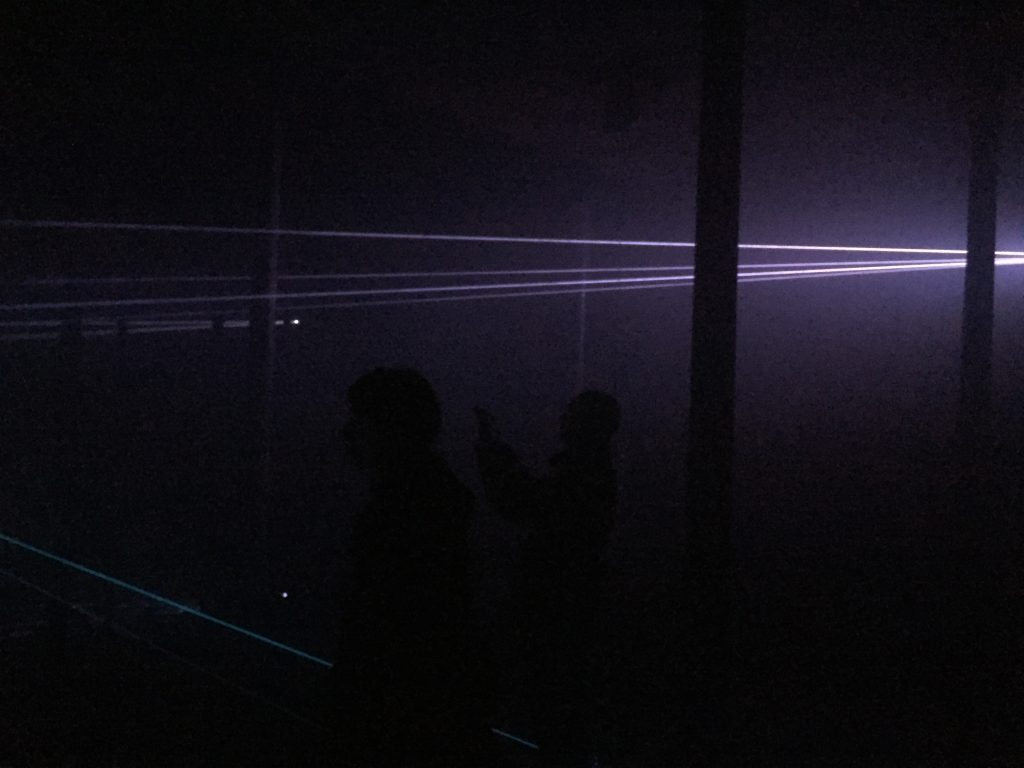 Towards the end of the piece, sharp shafts of laser light begin to stab their way into the middle of the space — as if from the outer edges of outer space. And then, before you know it, those beams are catching and refracting through the hanging icicles, and the music goes from somber to strangely joyful, and there’s a dazzling symphony — or choreography, or something — of co-ordinated light and sound.
Towards the end of the piece, sharp shafts of laser light begin to stab their way into the middle of the space — as if from the outer edges of outer space. And then, before you know it, those beams are catching and refracting through the hanging icicles, and the music goes from somber to strangely joyful, and there’s a dazzling symphony — or choreography, or something — of co-ordinated light and sound.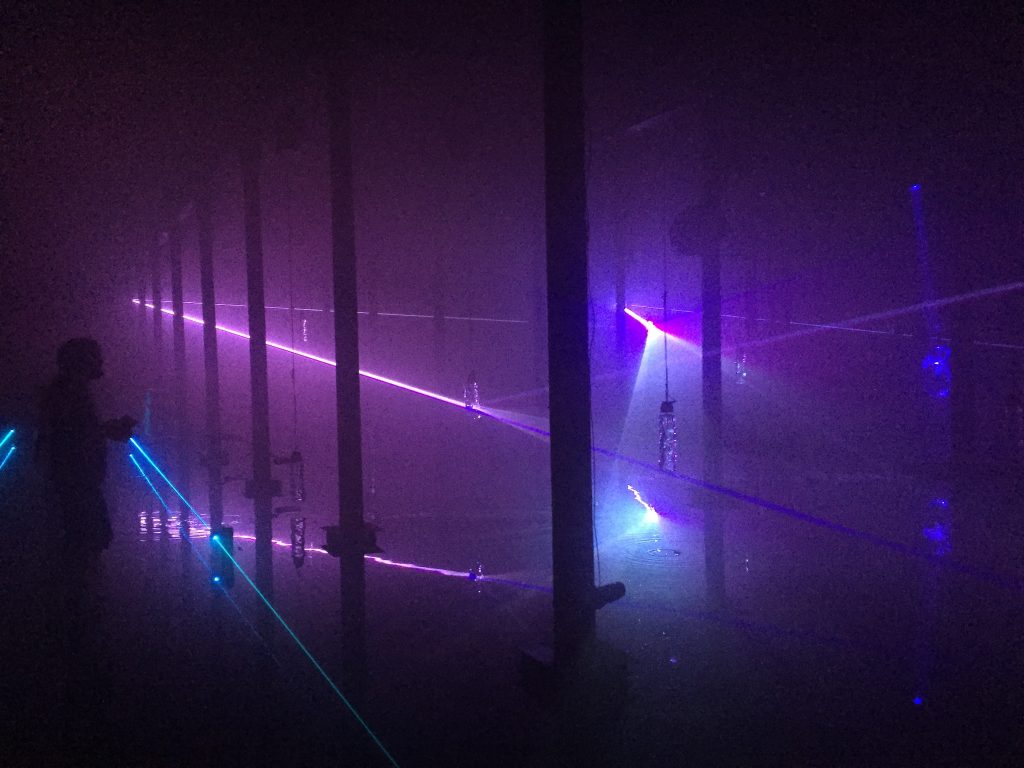 Perhaps this, finally, is the
Perhaps this, finally, is the  … Or something like that, anyway. Afterwards, I found two phrases from very different songs echoing around my head. From Canadian singer-songwriter Bruce Cockburn, the chorus of his hymn-like 1979 song “
… Or something like that, anyway. Afterwards, I found two phrases from very different songs echoing around my head. From Canadian singer-songwriter Bruce Cockburn, the chorus of his hymn-like 1979 song “ Having reached its climax, Aurora ends, and mysterious ice blocks appear lit at the corners of the walkways, to help light our way out. Ice blocks with items frozen inside them… is this an arrow? a quill? …human relics of a forgotten civilization, preserved in ice forever.
Having reached its climax, Aurora ends, and mysterious ice blocks appear lit at the corners of the walkways, to help light our way out. Ice blocks with items frozen inside them… is this an arrow? a quill? …human relics of a forgotten civilization, preserved in ice forever.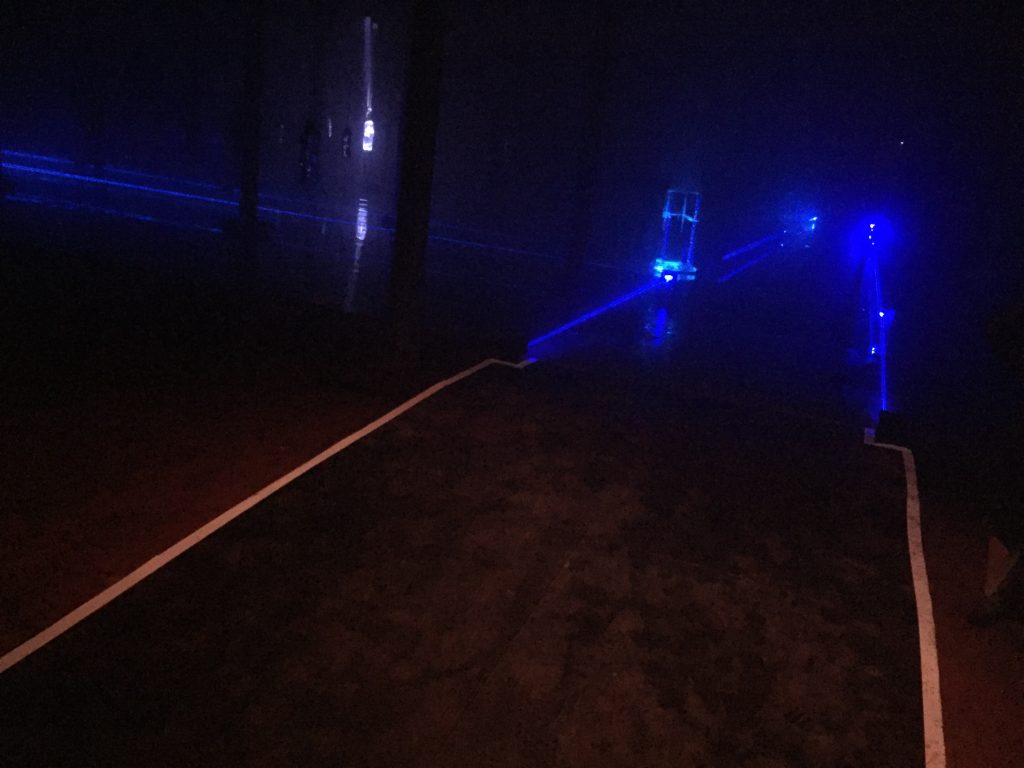 But then, bit by bit, the magic ebbs away. On the way out, we can suddenly see the ramp up to the flooded walkways (when we came in, it was too dark…). Those familiar white lines marking the perimeters of a stage space or holding area. Suddenly so banal after the mysteries of what we just witnessed. But then that’s the way of magic, isn’t it? Sometimes its most magical when you can see how they pulled off the trick…
But then, bit by bit, the magic ebbs away. On the way out, we can suddenly see the ramp up to the flooded walkways (when we came in, it was too dark…). Those familiar white lines marking the perimeters of a stage space or holding area. Suddenly so banal after the mysteries of what we just witnessed. But then that’s the way of magic, isn’t it? Sometimes its most magical when you can see how they pulled off the trick…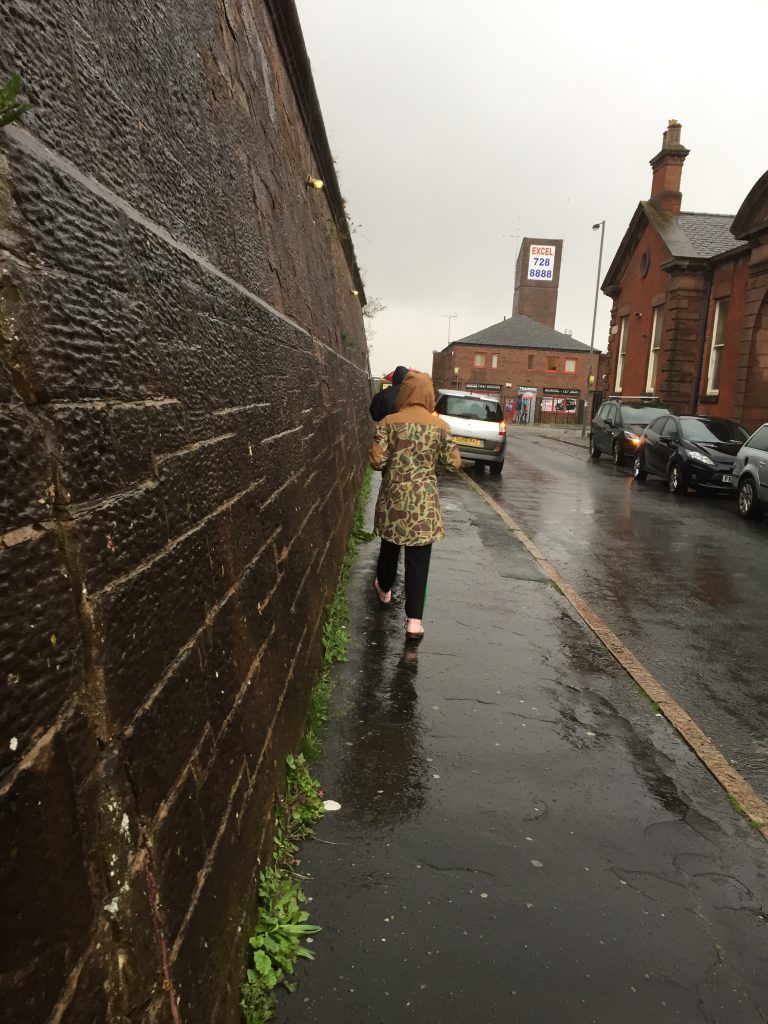 And outside, it’s still raining. It’s still Liverpool. And those walls that had seemed so imposing and forbidding when we went in seem suddenly much smaller, more ordinary… But ordinary like the outside of the Doctor’s Tardis. Because a moment ago they contained the universe inside…
And outside, it’s still raining. It’s still Liverpool. And those walls that had seemed so imposing and forbidding when we went in seem suddenly much smaller, more ordinary… But ordinary like the outside of the Doctor’s Tardis. Because a moment ago they contained the universe inside…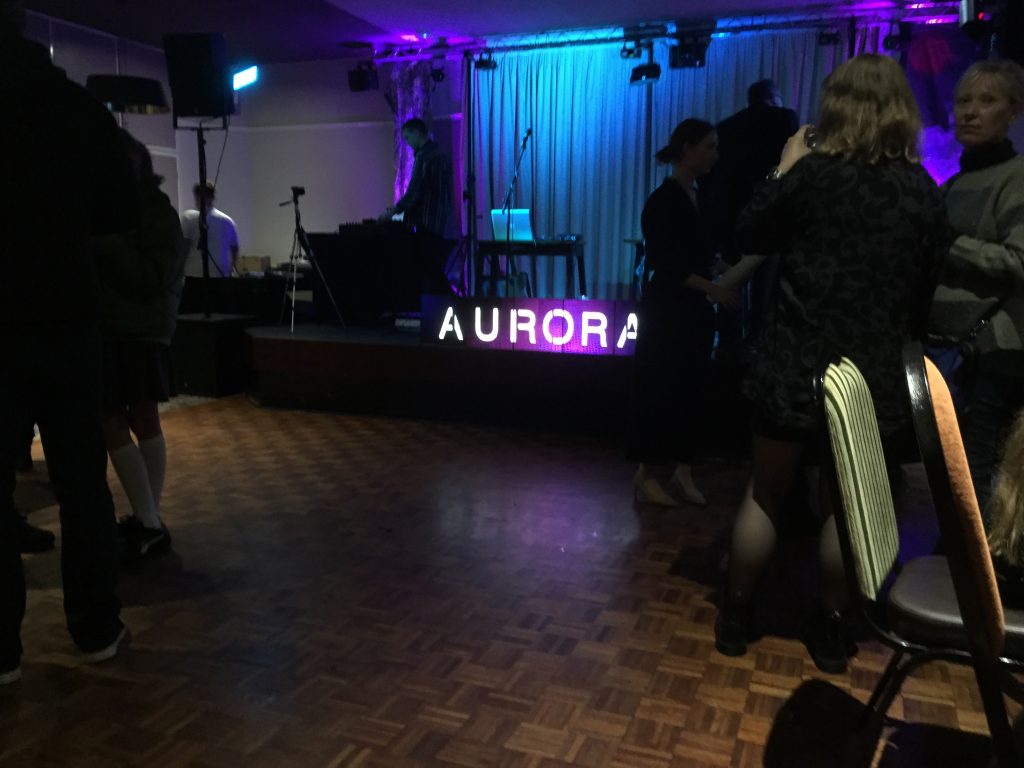 And so we repair to the launch reception for Aurora. Just up the street, on the other side of the Catholic Church, is the Mount Carmel Social Club… a community venue where members of the local community mix in with the slightly incongruous arty-types who seem to be staffing the show. Once everyone has a drink, the absence of words during the performance itself is (over-)compensated for by an excess of words from the great and the good — the Arts Council, the City of Liverpool, the commissioning body FACT, etc. It’s all the usual corporate verbiage that you get on such occasions, but it’s even harder to listen to than usual after what we just witnessed. Representing Invisible Flock, though, Victoria Pratt is refreshingly brief in her comments. She prefers, I think, to let the work speak for itself.
And so we repair to the launch reception for Aurora. Just up the street, on the other side of the Catholic Church, is the Mount Carmel Social Club… a community venue where members of the local community mix in with the slightly incongruous arty-types who seem to be staffing the show. Once everyone has a drink, the absence of words during the performance itself is (over-)compensated for by an excess of words from the great and the good — the Arts Council, the City of Liverpool, the commissioning body FACT, etc. It’s all the usual corporate verbiage that you get on such occasions, but it’s even harder to listen to than usual after what we just witnessed. Representing Invisible Flock, though, Victoria Pratt is refreshingly brief in her comments. She prefers, I think, to let the work speak for itself.

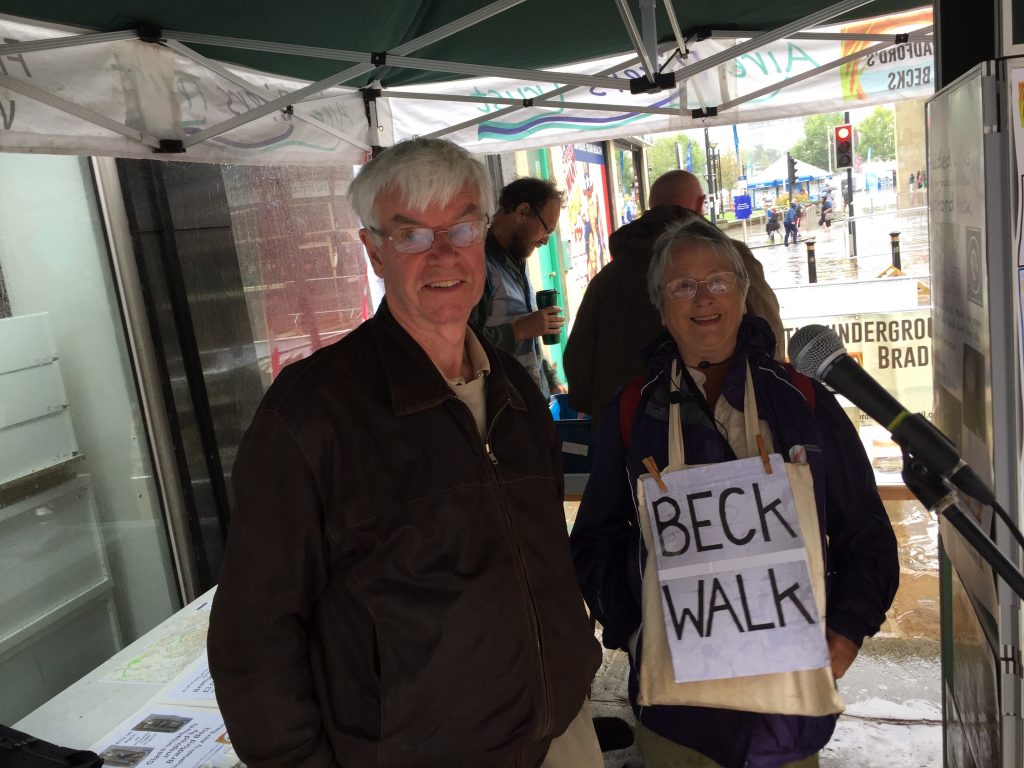
 Just past the gazebo, FoBB had opened up a manhole cover and surrounded it with a safety fence — as well as a polystyrene mock-up of a slate sculpture by Alex Blakey that’s being planned as a permanent feature… By looking down the hole, you can see Bradford Beck streaming by beneath the street. Although only the most educated observer would be able to distinguish the beck from a storm drain, passers-by were nevertheless intrigued when told that this was the hidden river around which the city was first built….
Just past the gazebo, FoBB had opened up a manhole cover and surrounded it with a safety fence — as well as a polystyrene mock-up of a slate sculpture by Alex Blakey that’s being planned as a permanent feature… By looking down the hole, you can see Bradford Beck streaming by beneath the street. Although only the most educated observer would be able to distinguish the beck from a storm drain, passers-by were nevertheless intrigued when told that this was the hidden river around which the city was first built….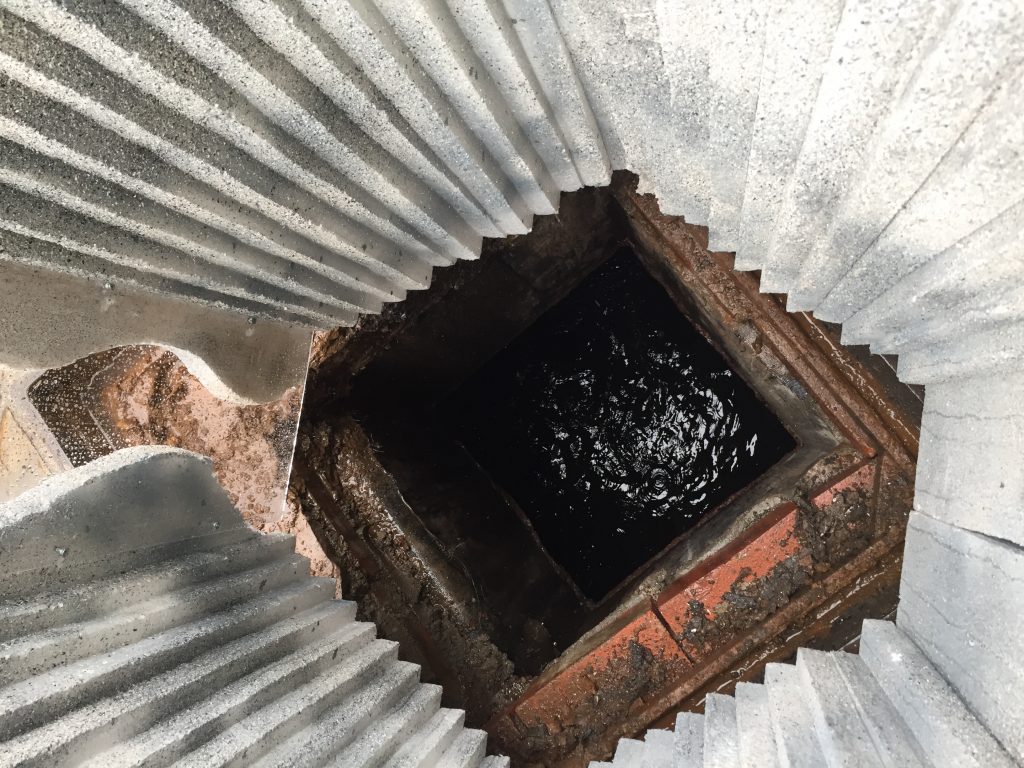 Across the street in Bradford’s City Park area, there were more under-trafficked gazebos and marquees, including the one from which Bradford Community Broadcasting (BCB) was live-casting for the day. Eddie and I took time out from our stall location to speak with host Mary Dowson — who was as engaging and on-the-ball as ever — about how and why we both got involved in using the arts to talk about water.
Across the street in Bradford’s City Park area, there were more under-trafficked gazebos and marquees, including the one from which Bradford Community Broadcasting (BCB) was live-casting for the day. Eddie and I took time out from our stall location to speak with host Mary Dowson — who was as engaging and on-the-ball as ever — about how and why we both got involved in using the arts to talk about water.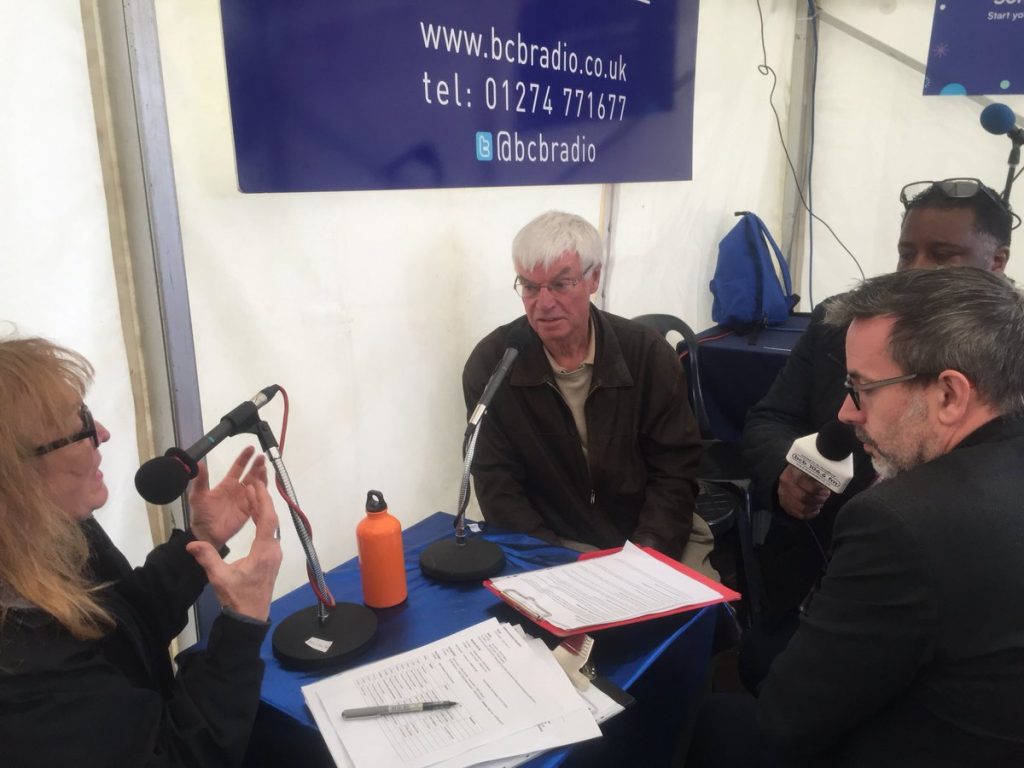 It was actually really interesting to talk with Mary immediately after she’d interviewed
It was actually really interesting to talk with Mary immediately after she’d interviewed 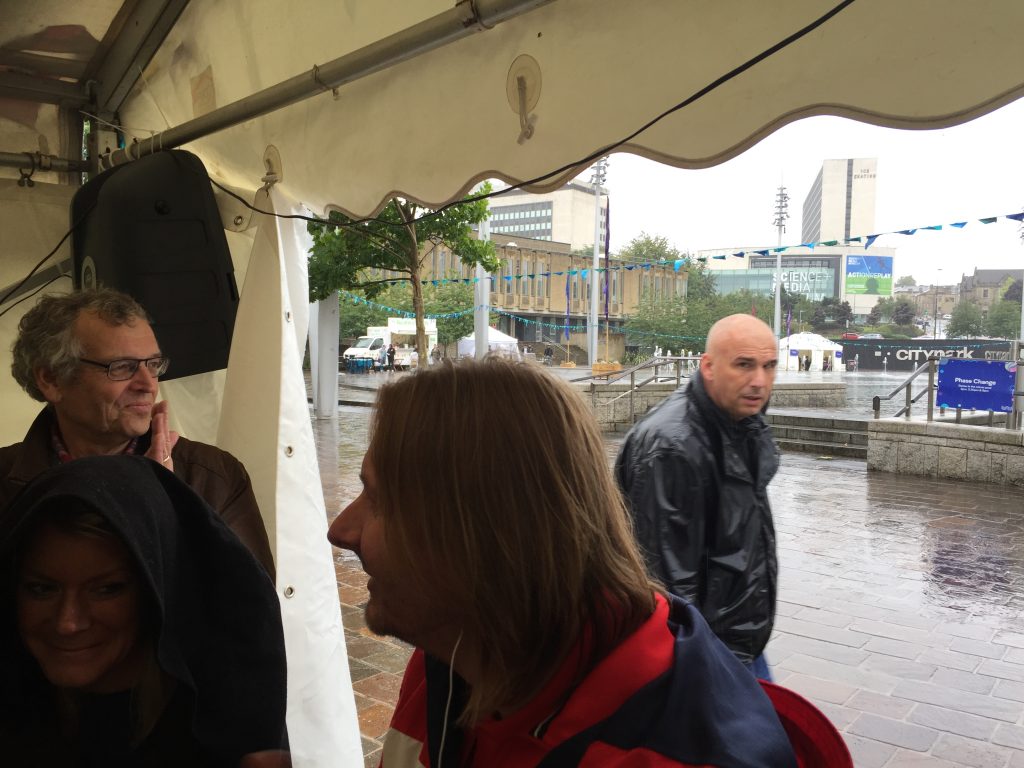 Alas, as you can see from this shot, our time in the BCB tent coincided with one of the heaviest of the afternoon’s downpours, which left City Park itself pretty much deserted. I do hope this wasn’t too disappointing for Bubble Up’s organisers, from the
Alas, as you can see from this shot, our time in the BCB tent coincided with one of the heaviest of the afternoon’s downpours, which left City Park itself pretty much deserted. I do hope this wasn’t too disappointing for Bubble Up’s organisers, from the 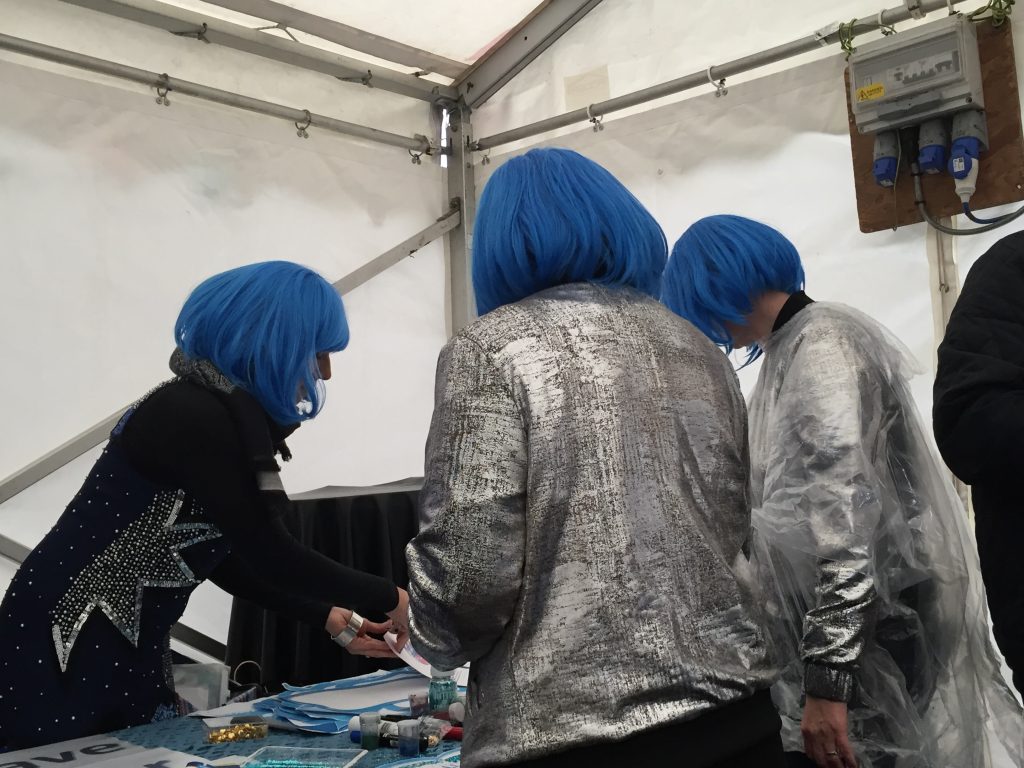 The weather was generally a lot better on Sunday (yesterday) than Saturday, so I do hope Bubble Up bubbled a bit better with some sunshine… By then, though, Eddie and I were off on our other festival weekend mission. presenting a musical walking tour for Saltaire Festival, titled The Ballad of Little Beck.
The weather was generally a lot better on Sunday (yesterday) than Saturday, so I do hope Bubble Up bubbled a bit better with some sunshine… By then, though, Eddie and I were off on our other festival weekend mission. presenting a musical walking tour for Saltaire Festival, titled The Ballad of Little Beck.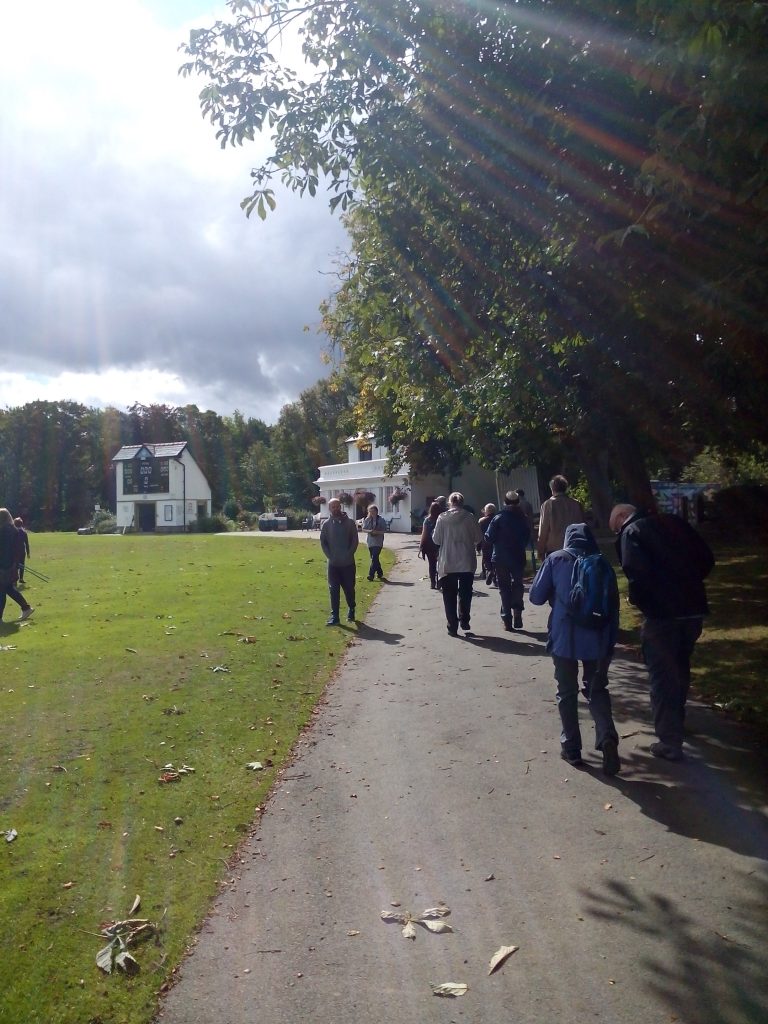
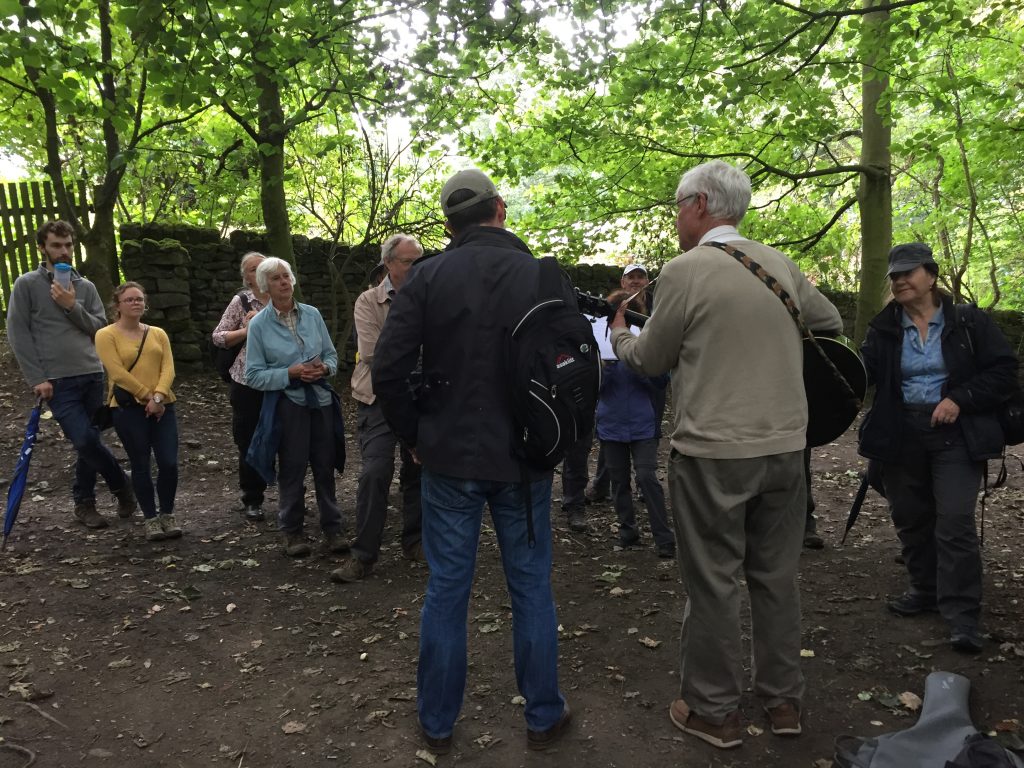 The walk was in some ways a “live remix” of parts of the
The walk was in some ways a “live remix” of parts of the 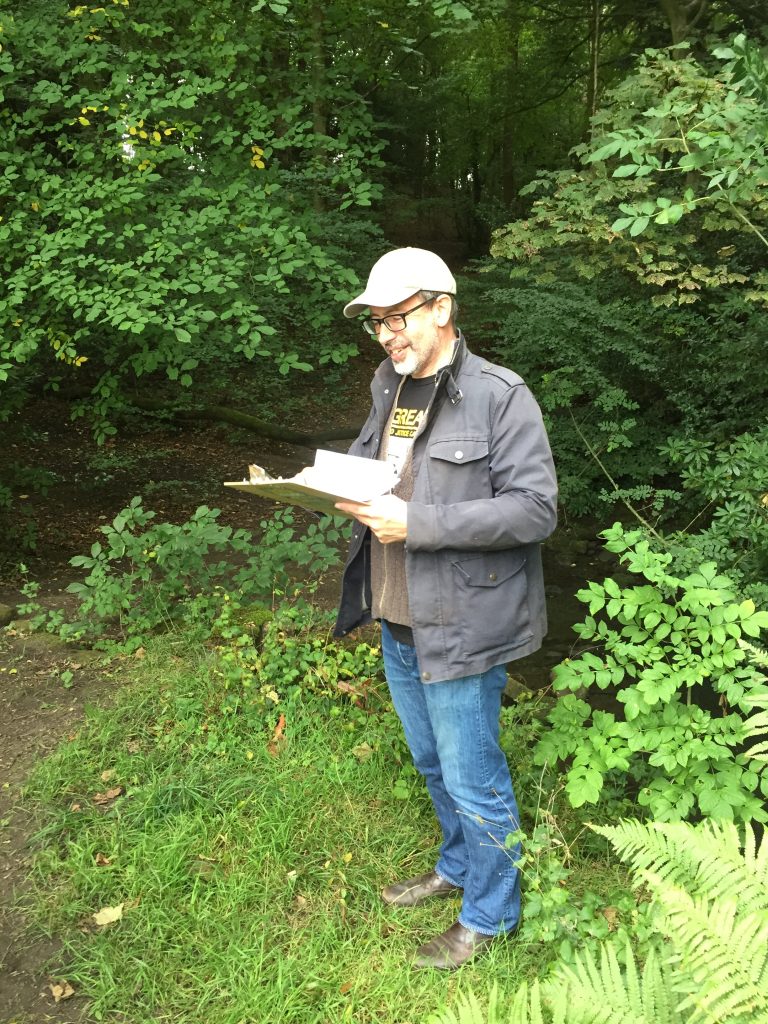 A little further along the route, here I am performing John Nicholson’s poem “Bingley’s Beauties”. (Thanks to Ruth Bartlett for these pics, by the way.) Nicholson was a mill worker and poet apparently loved by Titus Salt Sr., but he died in 1843, before Saltaire itself was built, when he drowned while crossing the River Aire en route to visit his aunt in, yes, Eldwick (we had traced his steps in this direction from Saltaire). As you can see from the picture below, at this point we were standing directly over Little Beck itself — halfway along Sparable Lane, heading towards Gilstead (in the parish of Bingley).
A little further along the route, here I am performing John Nicholson’s poem “Bingley’s Beauties”. (Thanks to Ruth Bartlett for these pics, by the way.) Nicholson was a mill worker and poet apparently loved by Titus Salt Sr., but he died in 1843, before Saltaire itself was built, when he drowned while crossing the River Aire en route to visit his aunt in, yes, Eldwick (we had traced his steps in this direction from Saltaire). As you can see from the picture below, at this point we were standing directly over Little Beck itself — halfway along Sparable Lane, heading towards Gilstead (in the parish of Bingley).
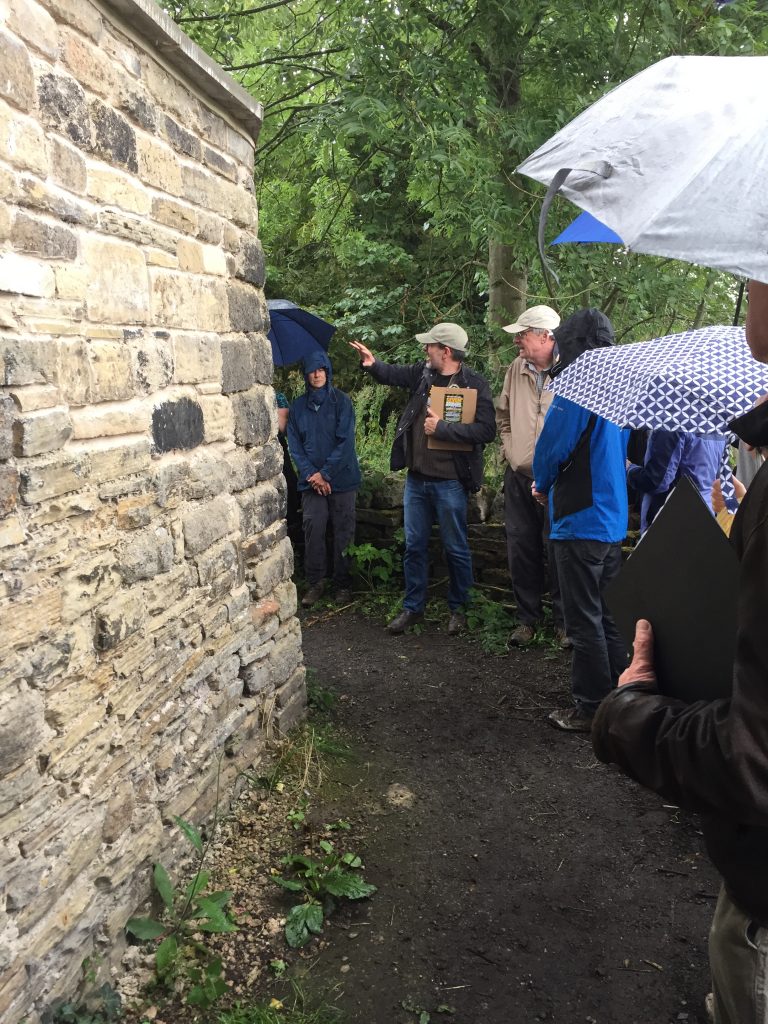
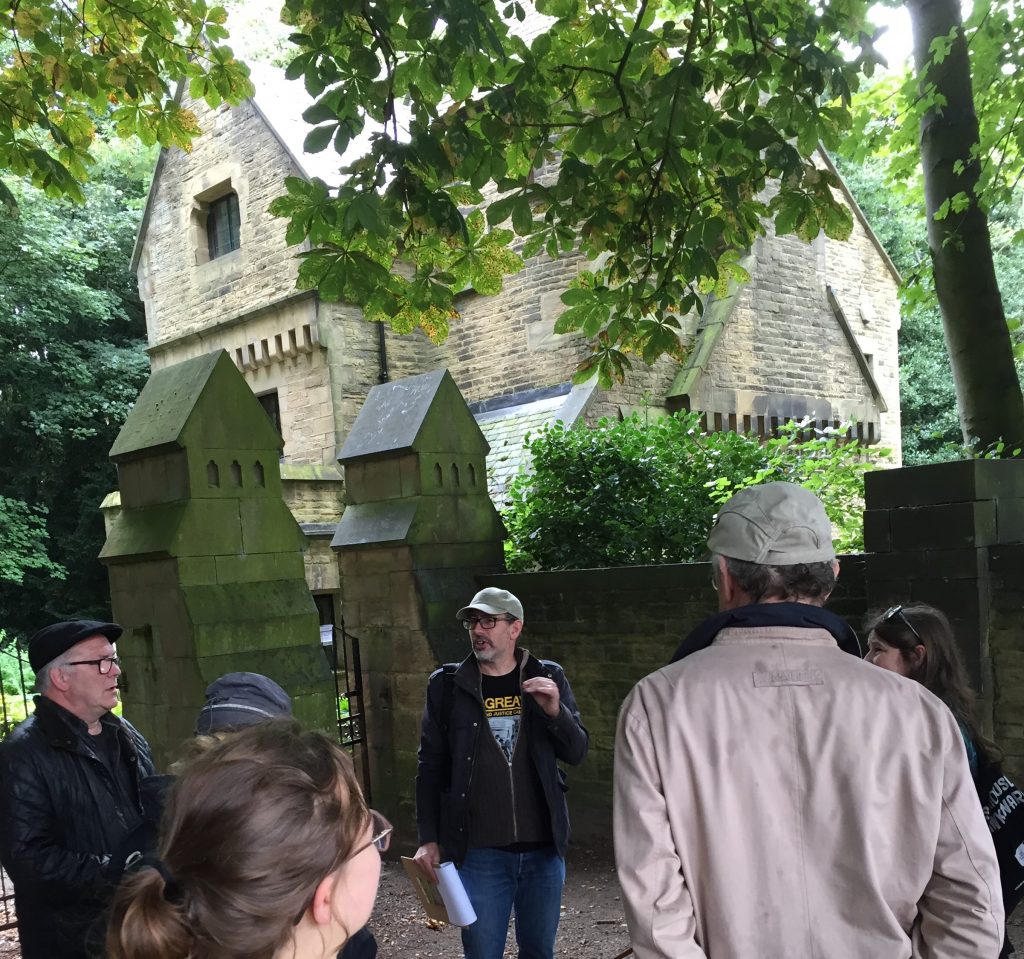 … here we paused at the entrance gate and gate lodge (‘North Lodge’), which is the best remaining indication of the architectural style of the now ruined mansion. And then it was into the woods to find the ruins themselves… Some of what we found there is recorded on some video clips collected here.
… here we paused at the entrance gate and gate lodge (‘North Lodge’), which is the best remaining indication of the architectural style of the now ruined mansion. And then it was into the woods to find the ruins themselves… Some of what we found there is recorded on some video clips collected here.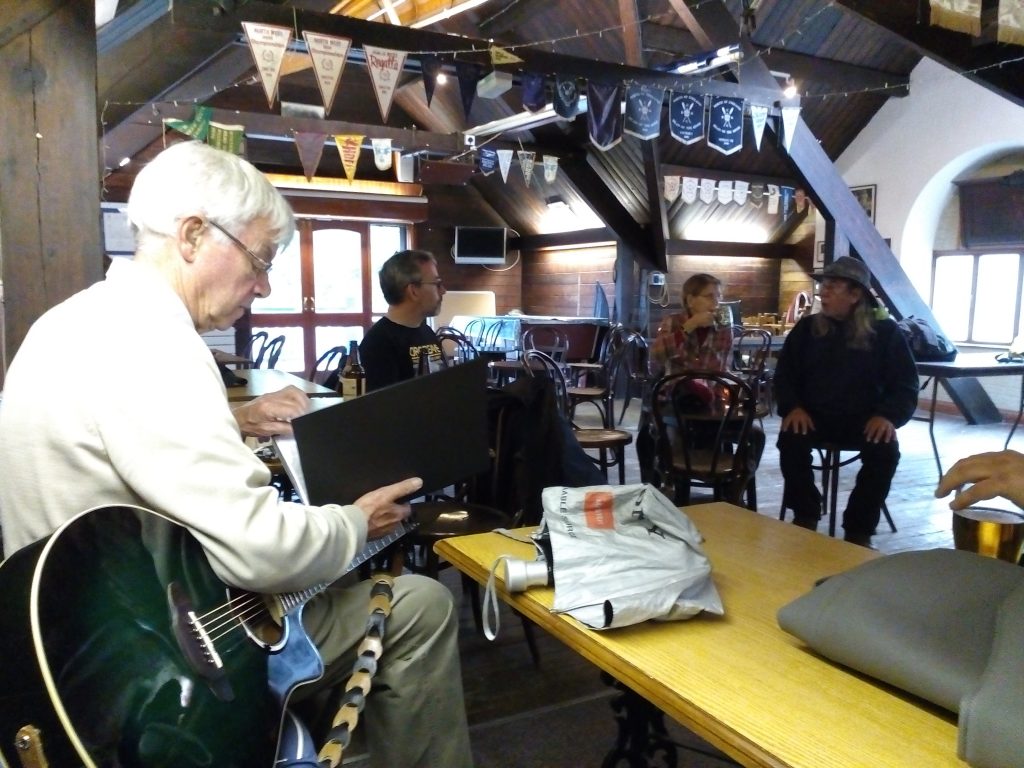 After making our way back downhill through the Milner Field estate, we finished up the walk with a visit to Bradford Amateur Rowing Club’s clubhouse — where we shared a drink and were treated to a number of additional songs from Eddie (who even took requests). The picture above (showing Eddie, me, Molly Kenyon, Rob Martin … others were at the bar at this point!) is courtesy of Denise Boothman, who sent it over to me by email with a note saying “Thanks once again for a fascinating and enjoyable afternoon.” We certainly enjoyed presenting it… Thankyou Saltaire Festival for inviting us to present.
After making our way back downhill through the Milner Field estate, we finished up the walk with a visit to Bradford Amateur Rowing Club’s clubhouse — where we shared a drink and were treated to a number of additional songs from Eddie (who even took requests). The picture above (showing Eddie, me, Molly Kenyon, Rob Martin … others were at the bar at this point!) is courtesy of Denise Boothman, who sent it over to me by email with a note saying “Thanks once again for a fascinating and enjoyable afternoon.” We certainly enjoyed presenting it… Thankyou Saltaire Festival for inviting us to present.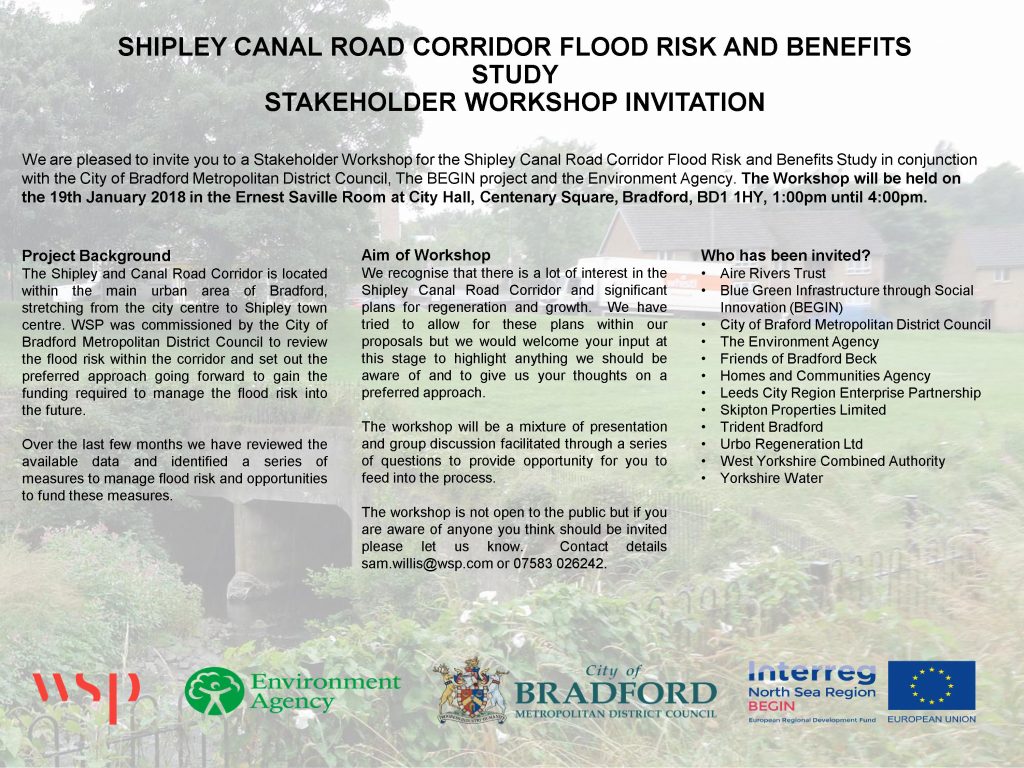
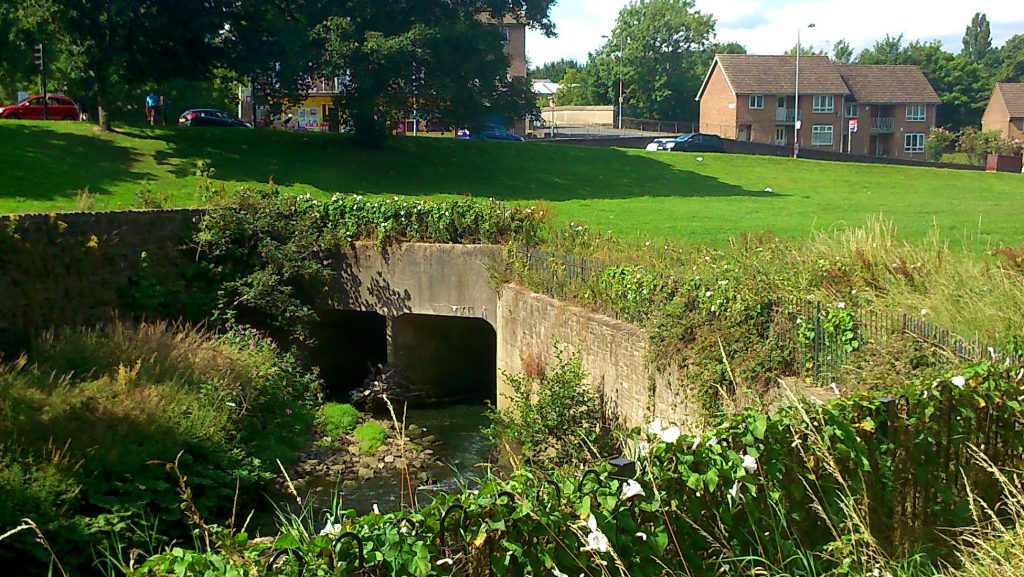 If there’s a slight sense of time-looped deja vu for me here, it’s because I first heard this possibility mentioned back in 2012, at the very beginning of the MSW project, when I was first getting to know Shipley’s rivers. During that same year, Barney Lerner of the
If there’s a slight sense of time-looped deja vu for me here, it’s because I first heard this possibility mentioned back in 2012, at the very beginning of the MSW project, when I was first getting to know Shipley’s rivers. During that same year, Barney Lerner of the 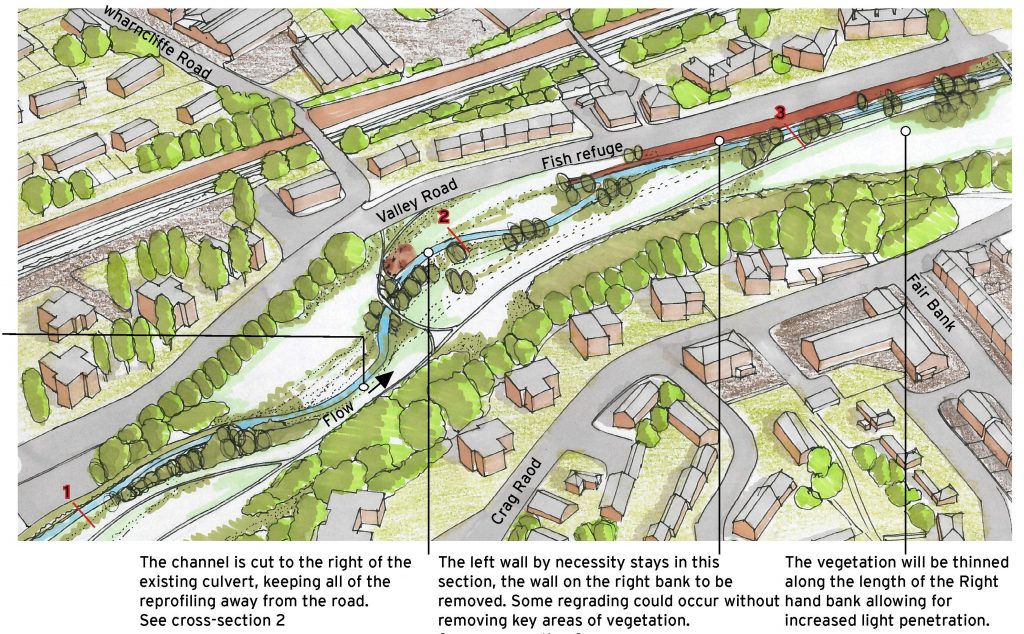 This image, and the drawings below, are reproduced with Barney’s permission from a feasibility study which FoBB commissioned from
This image, and the drawings below, are reproduced with Barney’s permission from a feasibility study which FoBB commissioned from 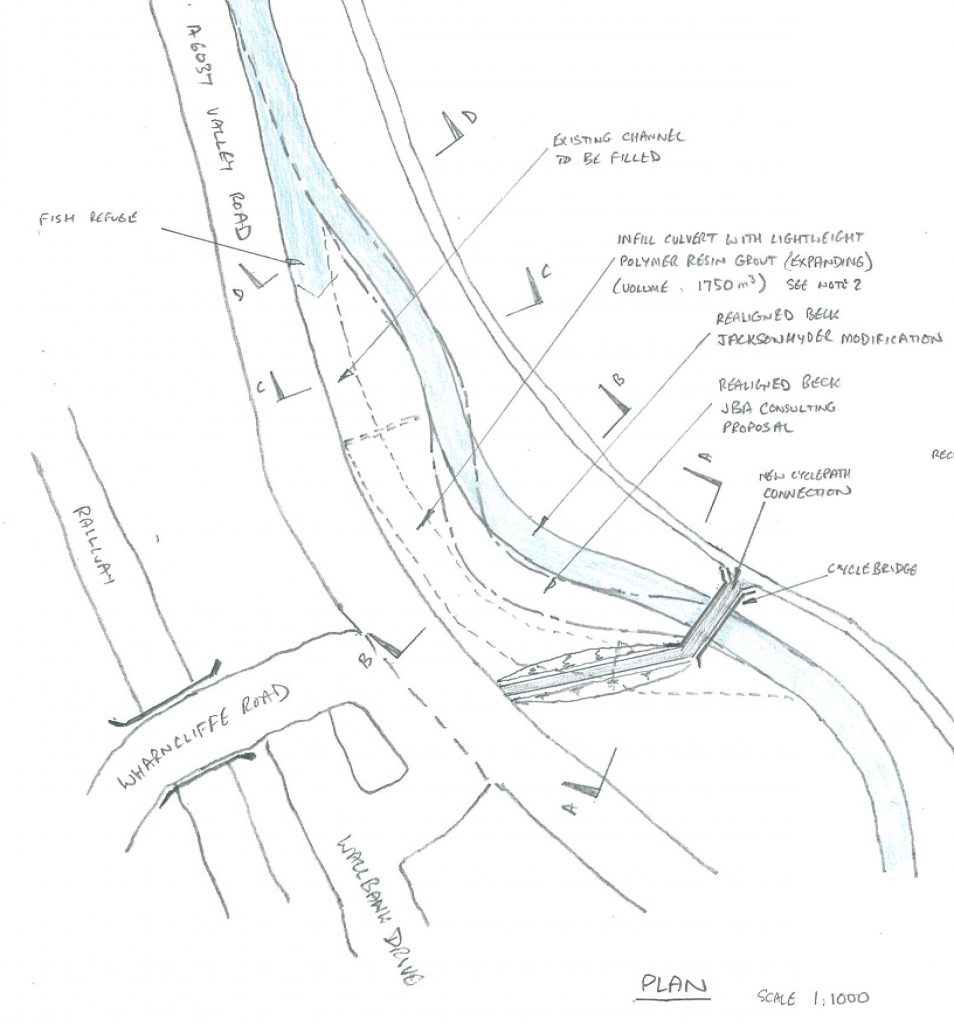
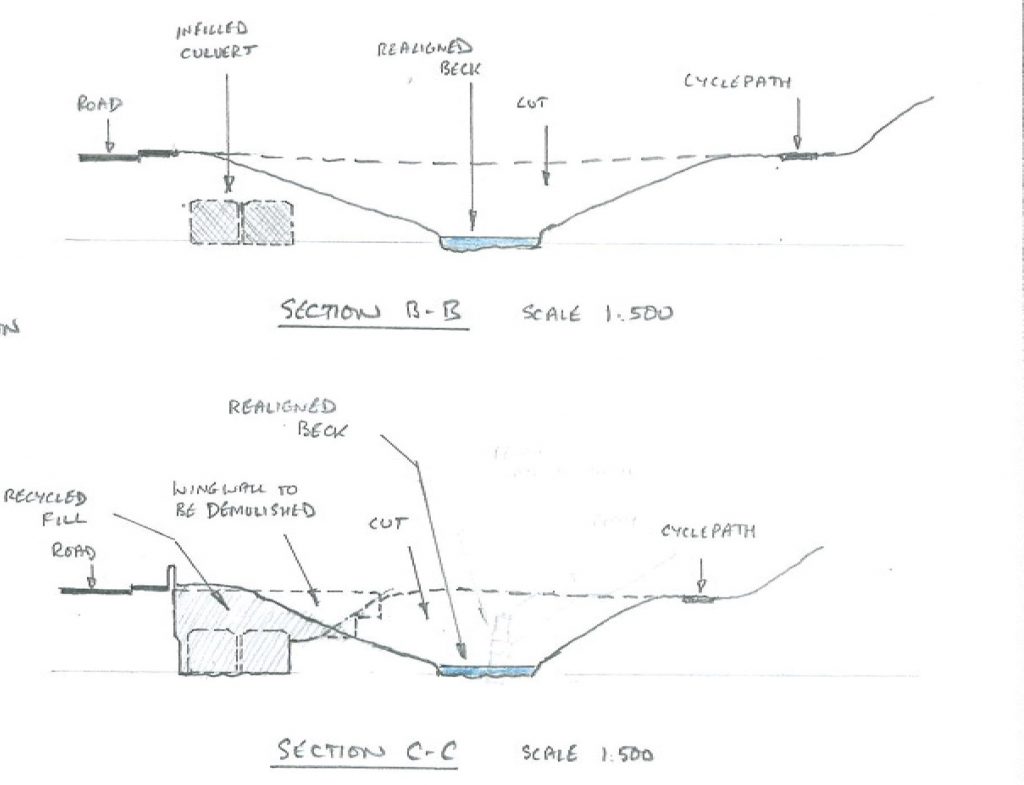
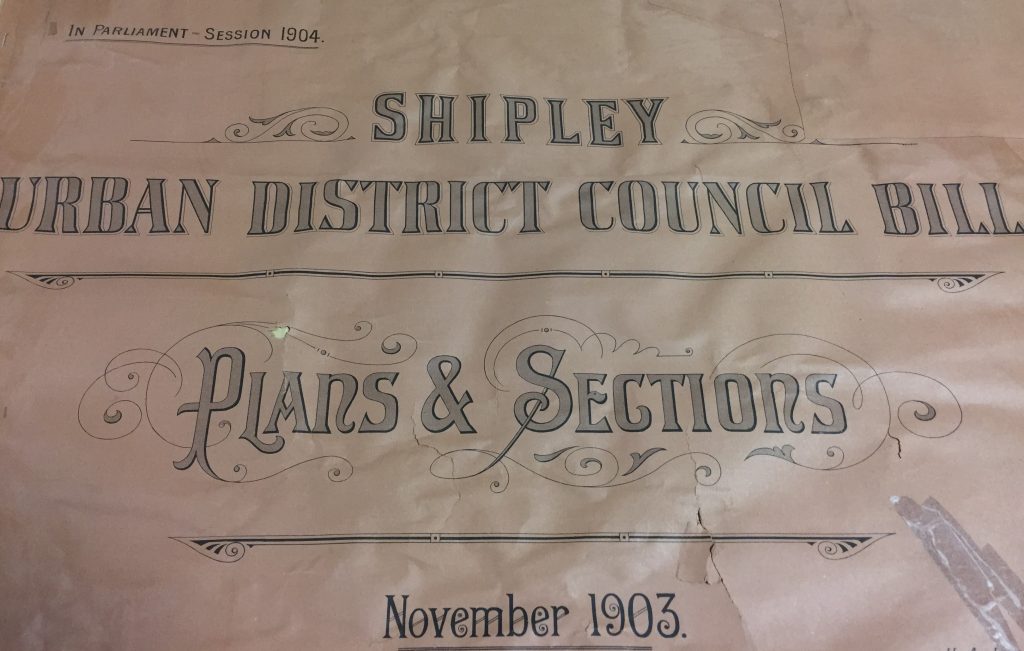 This is the front cover to a big, map-size document book that I found in the Local Studies section of Bradford Central Library. In 1903/04, Shipley Urban District Council was a pretty new entity, having evolved from the old Shipley Local Board, and it had big plans for Shipley’s regeneration (this involved, for example, a lot of development in the Dockfield area, as
This is the front cover to a big, map-size document book that I found in the Local Studies section of Bradford Central Library. In 1903/04, Shipley Urban District Council was a pretty new entity, having evolved from the old Shipley Local Board, and it had big plans for Shipley’s regeneration (this involved, for example, a lot of development in the Dockfield area, as 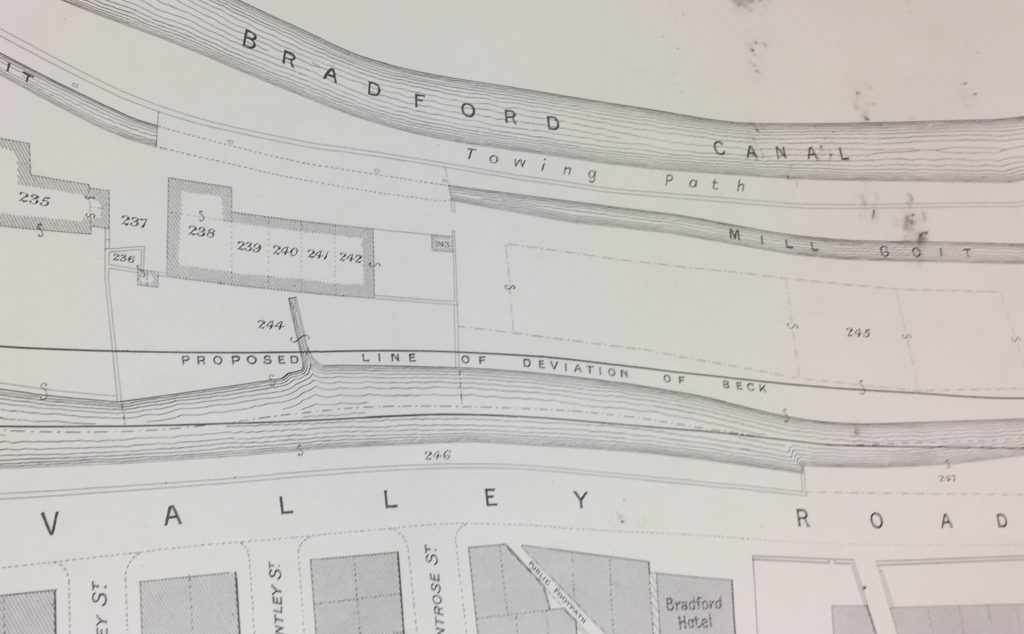 In the map diagram above, you can again see Valley Road, and the Beck running alongside it…. together with a plan for re-routing the Beck slightly further east (“Proposed line of deviation of Beck”), further from the road. At the top of the picture runs the then-still-extant Bradford Canal (eventually filled in after its closure in 1922). Now look at the next image, which shows the next segment of Beck/Canal/Road on the way south towards Bradford…
In the map diagram above, you can again see Valley Road, and the Beck running alongside it…. together with a plan for re-routing the Beck slightly further east (“Proposed line of deviation of Beck”), further from the road. At the top of the picture runs the then-still-extant Bradford Canal (eventually filled in after its closure in 1922). Now look at the next image, which shows the next segment of Beck/Canal/Road on the way south towards Bradford…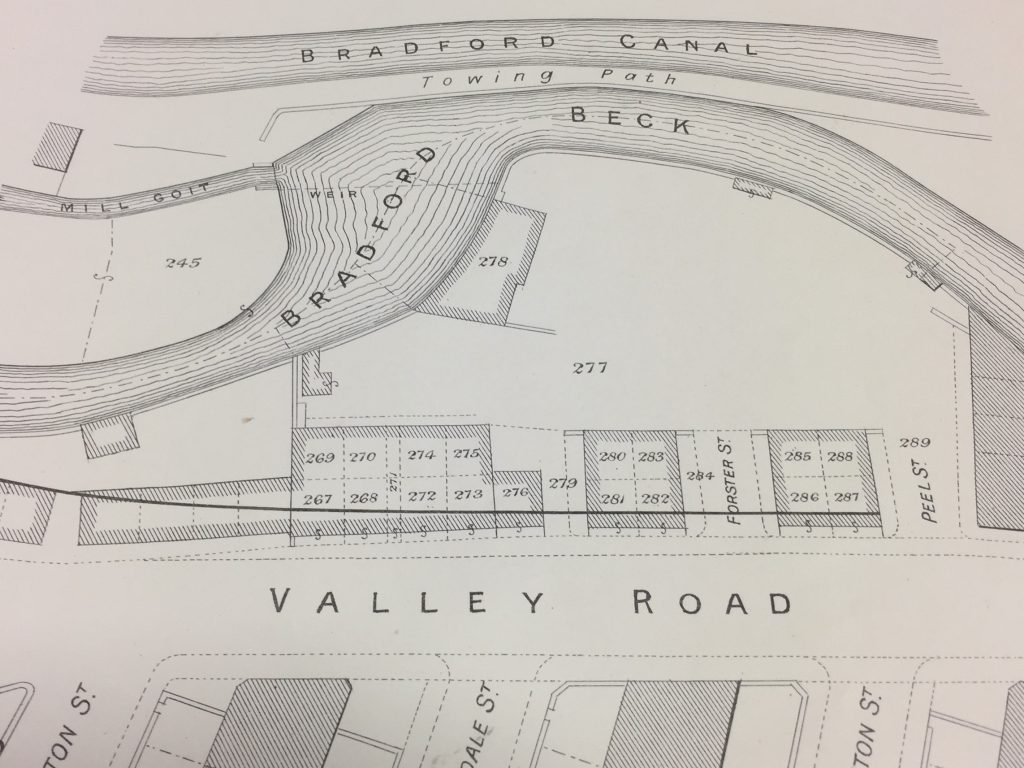
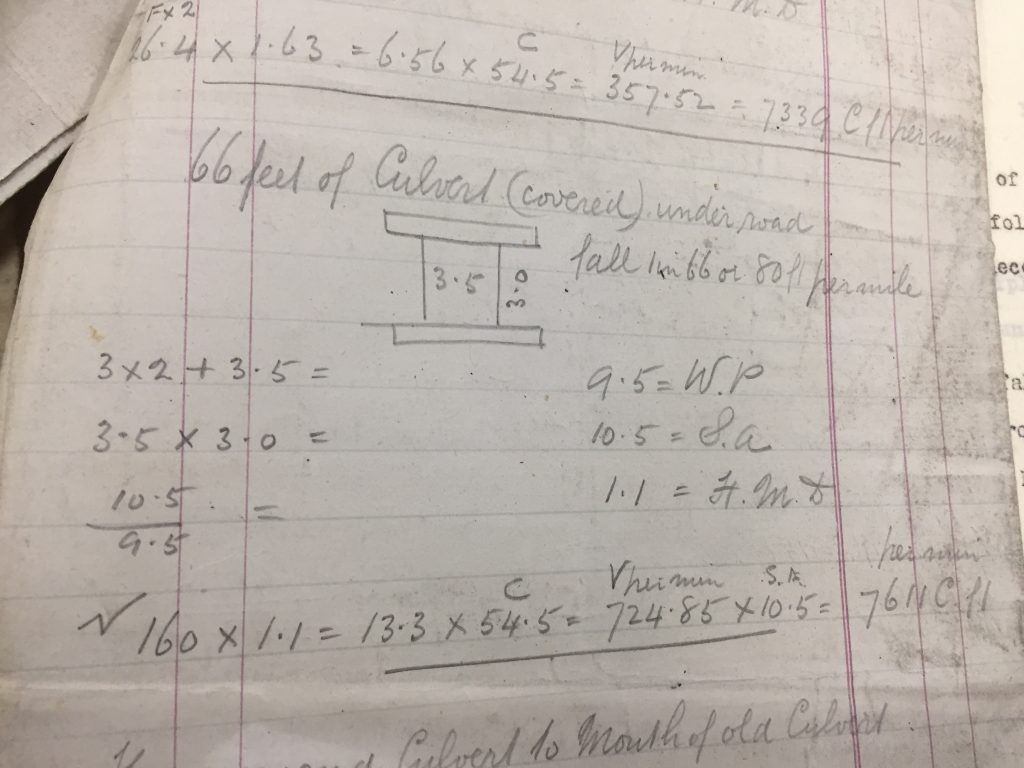 These pencil-sketched engineers’ calculations almost look as if they could have been written yesterday. Don’t ask me what all the numbers mean, but the plan is for “66 feet of Culvert (covered)” — so about 20 metres. I found these sheets of calculations among the Shipley Urban District Council papers held by West Yorkshire Archive Service (to whom, thanks for permission to reproduce this image). The notes are undated, but they’re in amongst other papers relating to SUDC’s early 20th C. redevelopments, and they also provide detailed specifications about other sections of open culverting that this closed culvert will connect to (just as is indeed the case along Valley Road). Is this perhaps a handwritten plan for the construction of the box culvert in question?
These pencil-sketched engineers’ calculations almost look as if they could have been written yesterday. Don’t ask me what all the numbers mean, but the plan is for “66 feet of Culvert (covered)” — so about 20 metres. I found these sheets of calculations among the Shipley Urban District Council papers held by West Yorkshire Archive Service (to whom, thanks for permission to reproduce this image). The notes are undated, but they’re in amongst other papers relating to SUDC’s early 20th C. redevelopments, and they also provide detailed specifications about other sections of open culverting that this closed culvert will connect to (just as is indeed the case along Valley Road). Is this perhaps a handwritten plan for the construction of the box culvert in question?


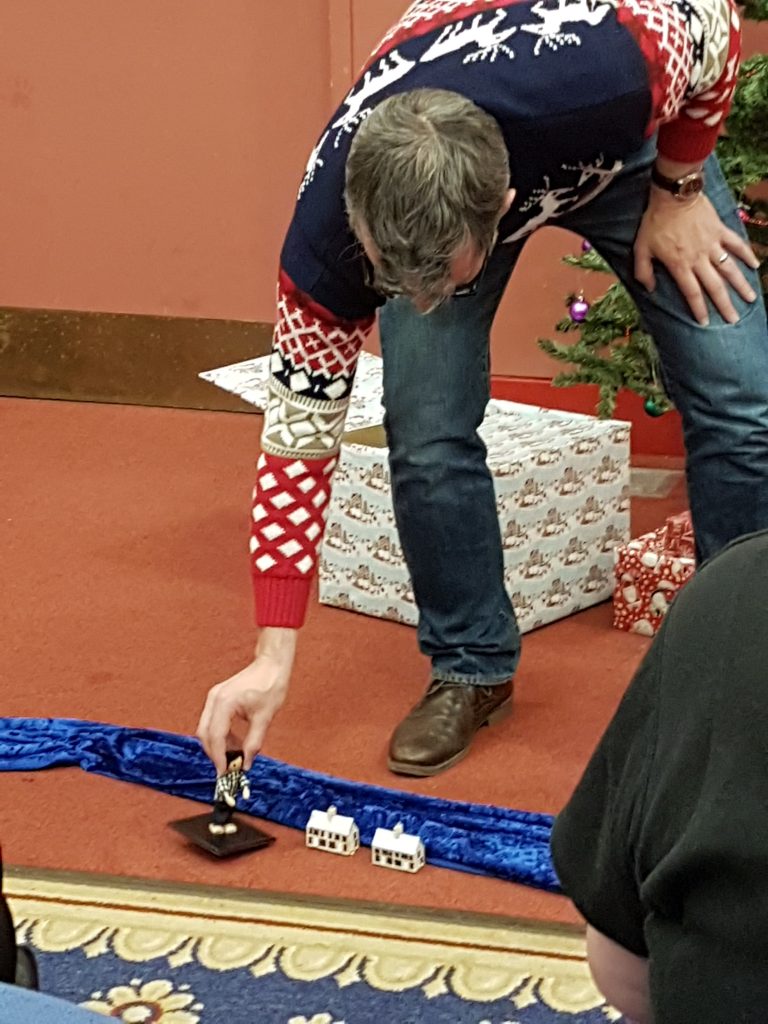

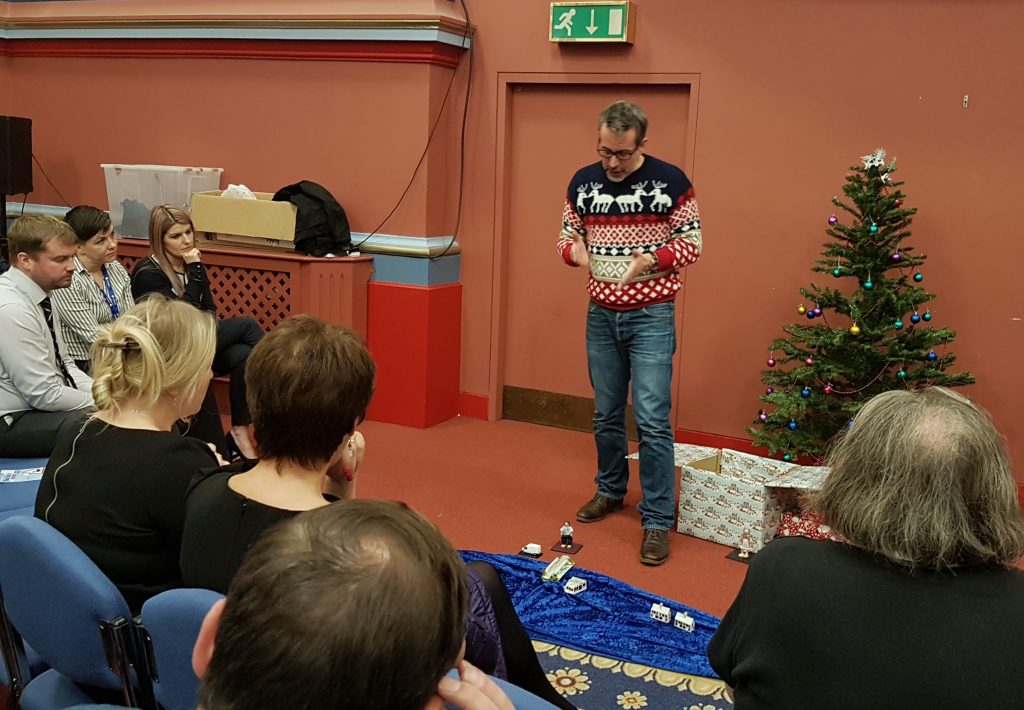


 Amazed and humbled, I posted a message thanking everyone who had donated, and mentioning that — if anyone else still wanted to donate — then the extra would all go to further defraying the family’s rent arrears. And over the next few days, sure enough, the total sum continued to tick up. By Tuesday — the day of the scheduled eviction — the total amount given had topped just over £2,200 (where it has stayed since).
Amazed and humbled, I posted a message thanking everyone who had donated, and mentioning that — if anyone else still wanted to donate — then the extra would all go to further defraying the family’s rent arrears. And over the next few days, sure enough, the total sum continued to tick up. By Tuesday — the day of the scheduled eviction — the total amount given had topped just over £2,200 (where it has stayed since).


